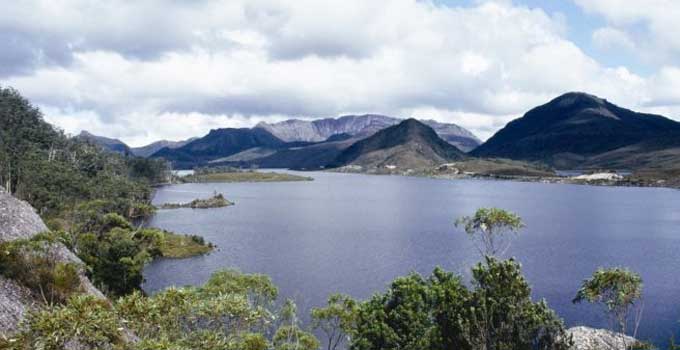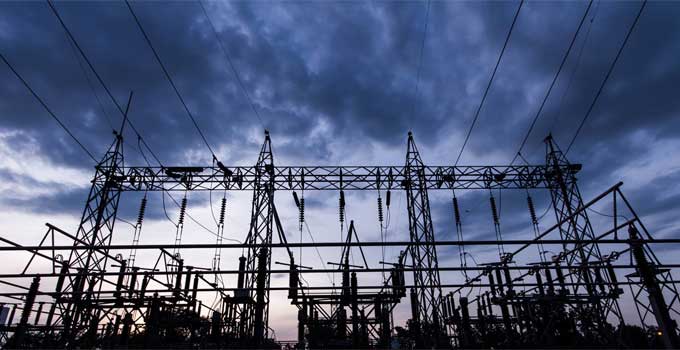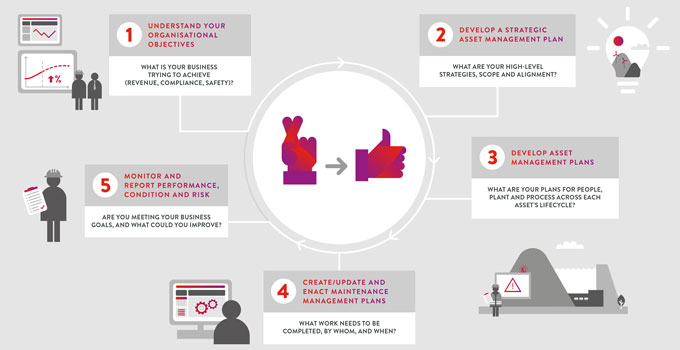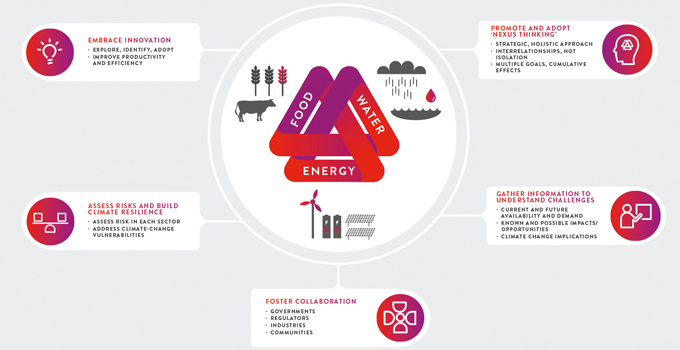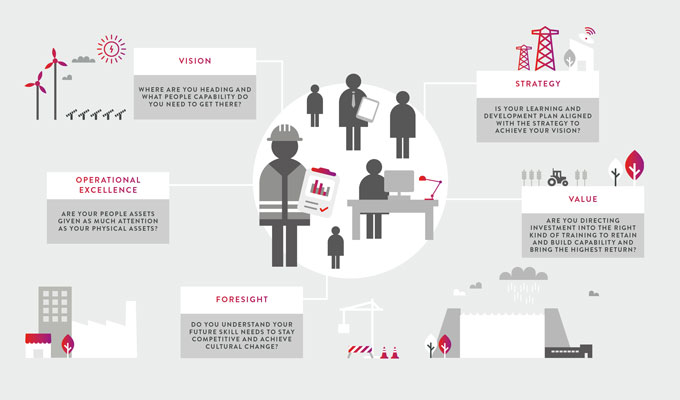Planning for the future – the challenges of dam inspection and maintenance
No dam is ‘maintenance free’. Without appropriate maintenance and refurbishment at the right times, a dam may not be able to fulfil its function safely for the full length of its design life (which could be more than a century).
This presents many challenges for asset owners. To keep the dam operating as the designer intended – and get the most out of the original investment over the long term – owners will need to develop and implement a suitable operations and maintenance manual aligned with the asset management plan and reflecting a ‘whole of life’ strategy. These plans will need to consider the unique characteristics of each dam and cover all the relevant issues. And there are many!
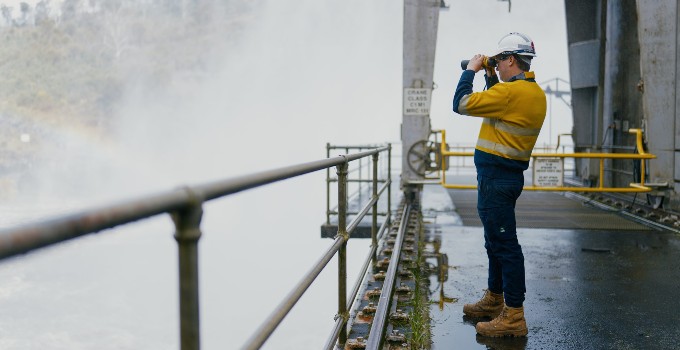
Dams consist of a number of different elements. There are the main civil engineering components including the wall that holds back the water and the spillway – but there could also be mechanical elements (pipework, valves and gates) and electrical elements (power supply to lights, valves, gate motors and control systems). Each of these elements will have its own operational and maintenance requirements and different lifecycle duration. Ideally, all this detail needs to be captured in the operation and maintenance manual (as recommended by ANCOLD guidelines) and in an asset management plan.
Civil components
The civil components of dams have the longest life span, typically more than 100 years if well constructed and maintained. Common maintenance items that need to be regularly addressed include:
- Vegetation management
Trees and bushes will readily grow in earthfill and rockfill embankments. Regular control (e.g. annually) is necessary to ensure that roots don’t grow through the fill and initiate leaks through the embankment. Mowing the grass on the downstream face of the earthfill embankment and downstream contact is necessary so that the condition of the face can be observed. Even concrete gravity and concrete arch dams will require vegetation control along the downstream face contact with the foundation so that the dam can be easily viewed in routine inspections.
- Surface water drainage
Dam construction typically affects natural drainage lines, which is why surface water drains are a common feature around and on dams – such as along the groins (where the dam wall intersects with natural ground), along berms in embankment dams, along benches, at the top of cuttings, and along access tracks. Drains will need regular inspection for both erosion and blockage due to sediment or vegetation.
- Foundation drain cleaning
Concrete gravity dams and concrete arch dams typically have drains drilled into the rock foundations to relieve uplift pressures and help maintain stability of the wall. Over time, silt or iron-rich slime can build up as a byproduct of bacterial growth in the drains, reducing effectiveness. These drains typically require 5-yearly high-pressure flushing. Cleaning will also be needed for drains underneath spillways founded on rock and cut slopes in rock.
- Protection of the dam safety monitoring system
Protecting the dam safety monitoring system requires a range of regular activities. These include cleaning and clearing vee-notch seepage monitoring weirs, checking survey monitoring pillars and targets, and checking the calibration of level monitoring and indication devices, such as reservoir-level sensors, piezometers, tiltmeters and inclinometers. Regular functional testing will also need to be carried out on the alarming and tripping devices that form the primary protection elements of the dam, including spillway gates and scour valves.
- Clearing of trash racks
Outlet works usually have trash racks to stop debris entering the pipework and causing blockages. It’s important to check that the build-up of debris is tolerable and that any hydraulic losses won’t affect operations. Assessing and removing the debris isn’t easy, as the trash racks are often accessible only by remotely operated vehicles (ROVs) or by divers. Before the inspection, the outlet will typically need to be closed and isolated.
Inspection-driven longer term maintenance will also be required for particular elements of the dam, ideally addressing repair items promptly to minimise damage and the cost of future repairs if left untreated. For example, concrete repairs may be needed to address erosion in stilling basins and spillway chutes, or spalling of concrete due to reinforcement corrosion or freeze/thaw damage.
While regular inspections should be undertaken to detect slow deterioration, special inspections following major events – such as floods or earthquakes – should also be part of the operations and maintenance plan. Given that the key areas for inspection are often difficult to access safely, use of UAVs (e.g. to inspect a spillway crest and chute) or ROVs (e.g. to undertake underwater inspections or scanning of stilling basins, plunge pools or riverbed scour) should be considered.
When special inspections identify the need for repairs, the time is right to consider whether the dam’s design or surveillance could be improved to increase resilience for a similar event in future. For example, a higher strength concrete overlay may treat erosion of a spillway chute and increase its resistance to future erosion.
Mechanical components
Mechanical items such as steel or cast-iron pipework can also often last up to 100 years if adequately protected from corrosion. Concrete and cement mortar are very effective for this purpose as the alkaline environment provided by the cement paste provides a very low corrosion environment. Key to the effectiveness of this protection is ensuring that the cement remains in intimate contact with the steel or iron. This will require regular inspections and timely repairs. Where concrete protection is not practical, paint systems can be very effective for up to about 20 years. A suitable inspection regime will be needed so that any areas where the paint has deteriorated can be detected and patched.
Mechanical items such as valves and gates typically have an effective life of around 50 years; however, they need to be exercised regularly to keep them able to work on demand. This is not an issue of the parts wearing out from use; rather, it’s the risk of them seizing due to lack of use. Regular lubrication of bearings, gearboxes and trunnions needs to be included as part of the maintenance of these items. This is particularly important in scour valves and spillway gates that may have a very low frequency of use during normal operations but are there for use in emergencies. The wire ropes commonly used to hoist spillway gates open will need even more frequent replacement, at approximately every 20 years.
Electrical components
Electric motors are commonly used to drive the winches hoisting spillway gates or driving the shafts to open valves. Associated with the motors will be switchboards and power supply systems, typically including grid power supply and backup diesel generators. The typical life of these components is around 25 years. As with the mechanical components, lack of operation can lead to premature failure, so a regular regime of exercise is necessary to ensure maximum reliability and life.
The programable logic controllers (PLC) that are used to automate operations, allow remote operations and generate alarms will have a typical life of only 10–12 years due to changes in programming languages and rapid evolution of the hardware.
Getting the most out of life
As we’ve seen, regular maintenance is fundamental for keeping all the components of a dam operating as intended and maximising their lifespan – whether that’s 10 years or 100. This maintenance, including the exercising of the mechanical and electrical components, needs to be clearly documented in the operations and maintenance manual and recorded in an asset management system. The asset management plan must allow for regular maintenance and also budget appropriately for replacement or refurbishment when any component of the dam is due for retirement.
At Entura, we believe in getting the most out of every piece of infrastructure because that’s good for our clients, communities and the planet. With a solid regime of inspection and maintenance, all the parts of your dam will be on the strongest path to a long, reliable and sustainable life.
If you’d like to talk with us about inspecting and maintaining your dam/s, contact Phil Ellerton, Paul Southcott, or Richard Herweynen.
About the author
Paul Southcott is Entura’s Senior Principal – Dams and Headworks. Paul has an outstanding depth of knowledge and skill developed over more than 3 decades in the fields of civil and dam engineering. He is a highly respected dams specialist and was recognised as Tasmania’s Professional Engineer of the Year in Engineers Australia’s 2021 Engineering Excellence Awards. Paul has contributed to many major dam and hydropower projects in Australia and abroad, including Tasmania’s ‘Battery of the Nation’, the Tarraleah hydropower scheme, Snowy Hydro, and numerous programs of work for water utilities including SeqWater, Sun Water and SAWater. His expertise is a crucial part of Entura’s ongoing support for upgrade and safety works for Hydro Tasmania’s and TasWater’s extensive dams portfolios. Paul is passionate about furthering the engineering profession through knowledge sharing, and has supported many young and emerging engineers through training and mentoring.
Breathing new life into Australia’s aging wind farms
The wind industry, well-established in Europe for decades, took baby steps onto Australian soil in the late 1980s and 1990s. By the early 2000s, Australia’s new wind industry was ready to take off. Given that wind farms usually have a design life of anywhere between 15 and 30 years, our earliest wind farms are now reaching retirement age. The industry therefore faces a new set of challenges. Can these older wind farms continue to serve their important role in Australia’s clean energy transition or are they at their end of life?

So far, few wind farms in Australia have been decommissioned, dismantled and removed from the land. With many of our older wind farms sited to capture the best wind resources, there’s every reason to try to continue using these sites to harness wind energy.
One option is to squeeze more years out of the wind farm through effective maintenance and supportive analysis to ensure it is safe to do so while accepting that there may be increasingly frequent outages and increased maintenance costs to keep the wind turbines in service. However, although operation beyond the nominal life of a wind turbine is theoretically feasible, old wind turbines can’t keep spinning forever and will need to be stopped at some stage.
Other options for aging wind farms are refurbishment of some parts of the turbines, or full ‘repowering’ with completely new machines. This could also include a full redesign to accommodate larger turbines or to incorporate solar or battery energy storage systems.
An example of rejuvenation
Small grids may be some of the first to need to consider what to do about old wind farms. As an example, Hydro Tasmania’s Huxley Hill Wind Farm on King Island has three 250 kW wind turbines that were installed in 1998, and two 850 kW wind turbines that were installed in 2003.
For Huxley Hill Wind Farm, the King Island electricity load has not changed much over time, and offsetting diesel using renewable energy continues to make perfect sense.
For this site, the owner opted for a like-for-like replacement of nacelles (generator, gearbox, yaw system) of the Nordex 3 x N29 250 kW and potentially for the 2 x Vestas V52 850 kW wind turbines. This decision was partly about the good economics and sustainability of reusing existing infrastructure, and also because wind turbines of this size continue to suit the project so well.
When the wind farm was constructed 20+ years ago, the installed wind turbines were considered modern, large wind turbines. These days, the same suppliers do not offer anything less than 2 MW in capacity, with rotor diameters greater than 110 m. The lack of availability of what are now considered smaller wind turbines (say 1 MW) poses challenges for some small projects. At the scale of less than 1 MW, there are now few proven wind turbine options. At an even smaller scale (<100 kW), solar PV now dominates.
When any existing infrastructure is to be retained to support life extension of old wind turbines, such as at Huxley Hill, it’s crucial to confirm that it is still suitable and safe. This can include various techniques and activities, including:
- physical inspection by technicians and engineers
- excavation of the foundation backfill cover to reveal the tower-foundation joint and inspect corrosion and remediation
- surveying the tower and blade condition using drones
- surveying the tower verticality
- surveying the thickness of tower sections
- ultrasonic testing of bolts
- eddy current testing of welds to detect any flaws
- reviewing data from the turbines to refresh understanding of the actual wind regime, reassess fatigue loads and estimate remaining life.
Another important consideration when rejuvenating older wind farms is to consider the potential for adding solar or battery energy storage. With solar now more viable than when Huxley Hill Wind Farm was conceived, a 1.5 MW solar farm has been added to augment the wind generation.
Starting over with full repowering
Because the Australian wind industry is still relatively young, there is not yet an established practice or precedents for full repowering. However, in Europe, hundreds of wind farms have been repowered, often massively increasing output by using fewer but much larger modern turbines.
Repowering at around 25 years seems the most likely timeframe for most Australian wind farms – but few have yet reached this age. Ultimately, market factors will determine when repowering provides the best financial return.
Even though we’re still just on the brink of Australia’s repowering journey, it’s never too early to start considering the complexities and implications and assessing all options.
Repowering won’t be simple or quick. The development process for repowering NEM-connected wind farms is likely to be just as challenging as developing a new wind farm on a greenfield site.
The concept of ‘repowering’ involves a range of options for replacing old wind turbines and associated footings and electrical balance of plant with new, but it’s unlikely that much of the existing infrastructure and balance of plant will be able to retained if larger, modern turbines are selected. The layout of the wind farm is also likely to need revision to accommodate longer blades.
Planning approvals need to start just as early, as should the process of renegotiating with hosts, neighbours and communities. People may be concerned about the impacts of much taller turbines and the logistical issues of getting them to the site, as well as arrangements for the dismantling, removal and disposal of the superseded technology and infrastructure.
Repowering with bigger and more powerful turbines is also likely to involve re-permitting and negotiating a new grid connection agreement – neither of which are certain, given the cumulative impacts that may have emerged over time and any changes to rules and regulations since the wind farm was first developed.
By planning early for repowering, developers can get ahead on these issues as well as on condition assessment of the assets, decommissioning plans for old turbines, new studies that might be needed (such as bird monitoring), and new wind measurements for taller, modern wind turbines, perhaps using modern wind measurement technology such as lidar.
While some repowered wind farms will very likely incorporate new battery energy storage systems (BESS), they are less likely to deploy large-scale solar as a default, given that many of the best original wind sites in Australia are coastal or hilly, particular those in the south of the country. Nevertheless, the potential for co-located renewable generation, storage and loads is worth exploring.
Don’t wait for trouble – start planning now
We suggest that wind farm owners take action now to deepen their understanding of the condition and present value of their assets, and explore the full range of short-term and long-term options available through a feasibility and options study. After all, in such a dynamic market and technology landscape, and with the potential for aging assets to deteriorate or fail, decisions about end of life may need to be made earlier than expected.
About the author
Andrew Wright is Entura’s Senior Principal, Renewables and Energy Storage. He has more than 20 years of experience in the renewable energy sector spanning resource assessment, site identification, equipment selection (wind and solar), development of technical documentation and contractual agreements, operational assessments and owner’s/lender’s engineering services. Andrew has worked closely with Entura’s key clients and wind farm operators on operational projects, including analysing wind turbine performance data to identify reasons for wind farm underperformance and for estimates of long-term energy output. He has an in-depth understanding of the energy industry in Australia, while his international consulting experience includes New Zealand, China, India, Bhutan, Sri Lanka, the Philippines and Micronesia.
MORE THOUGHT LEADERSHIP ARTICLES
How robust is your emergency preparedness?
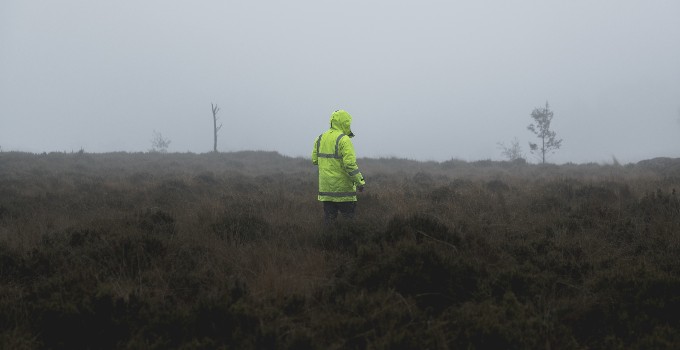
The old adage of ‘a company’s greatest assets are its people’ is never more true than in an emergency situation. The success of any emergency plan depends upon the skills, training and willingness of the people involved. It also relies on robust emergency preparation that takes as many scenarios as possible into account, and builds in a range of backups and alternatives for maximum agility and resilience.
All responsible dam owners have dam safety emergency plans (DSEP) which are carefully created and tailored to the needs of the company, its assets and its available resources.
If called upon in an extreme event, these plans will likely be pushed to their limit – but it’s vital that they perform as intended to reduce risk and consequences downstream.
The ultimate test of the emergency plan is how well it can cope with outages of power and/or communications. ‘Stress testing’ emergency plans for outage scenarios and implications is key to achieving a robust plan.
Power and communications outages
Where dams have moving parts, such as valves or floodgates, backups are needed to counter power outages. Are backup generators in place, or can a portable generator be brought to site at short notice? Is there a clear, safe access route to site during emergency conditions (e.g. not flooded or blocked by fallen trees)? Where this is not possible, can the valves or floodgates be operated by hand? A further question is whether these components are readily operable and exercised regularly.
Many dams are located in remote areas, and in some cases mobile phone reception is unreliable. In these situations, can satellite phones be made available? Landline phones may be available but depend on poles and lines remaining intact and operable during emergency conditions.
Communications are vital to ensuring the emergency plans are enacted under the direction of the incident controller. Where communications with remote resources are limited or not possible, those involved must fall back on their training and on lessons learnt from exercises and site-based, staged events involving scenarios of outages of power and communications. The DSEP can be updated with suggested actions for the on-site operators and emergency management team to follow in the worst-case scenario.
Alternative means of communication and access
In situations where check-in communications are required with those working remotely, alternative means must be considered in case of an outage of communications. In the absence of satellite phones, this could involve a messenger driving to site, but this relies on clear, safe access routes and careful consideration of the time required. In extreme cases, the only means of reaching a remote site may be by helicopter. This would require pre-arrangement with the closest helicopter providers regarding emergency availability.
The situation is similar with suppliers of plant and materials that may be required to assist with conditions at or downstream of the dam. How can they be contacted, and is there clear, safe access to site? Consider having emergency stockpiles at site or nearby and ready access to earthmoving plant.
Decision-making in a SCADA outage
If a power outage results in a localised SCADA outage, there will be no current instrumentation data available to guide critical decisions. In such circumstances, decisions must be based on likely behaviour during emergency conditions or on forecasts from before the emergency is declared. This would likely require detailed knowledge of the dams and their components, which highlights the importance of regular routine monitoring and detailed studies such as comprehensive surveillance reviews and dam safety reviews.
Company culture, teamwork and support
Where there is a ‘no blame’ company culture in which employees are encouraged to speak up, point out flaws in systems and processes and identify faults with assets, there is a greater likelihood that employees will participate successfully in staged exercises and events and provide useful information regarding how an incident response team will perform during an emergency.
Another important aspect of company culture is working together as a team. It is possible that a person may become fatigued but cannot convey this due to a communications outage. It is also conceivable that during an emergency a person may be unwilling to ‘leave their post’ until the job is done, becoming fatigued in the process.
It is important to have backup resources and to limit time in any role during the emergency to minimise the chance of mistakes being made. The emergency plan is only as strong as the weakest link in the chain of command.
For all resources, including external resources, provision of backups should take into account leave, prolonged illness and the need to ensure replacement when employees leave the company.
Where a company has a strong and positive safety culture and team ethos, detailed knowledge of its assets, regular inspection and exercising of valves and gates, and a commitment to team-based emergency training, employees are more likely to overcome the challenges posed by outages of power and communications during emergency conditions. They will find a way.
No one can predict and plan for every emergency scenario, but we believe that the tips we’ve shared here can help dam owners to develop and maintain robust emergency plans that have a higher likelihood of success when called into action.
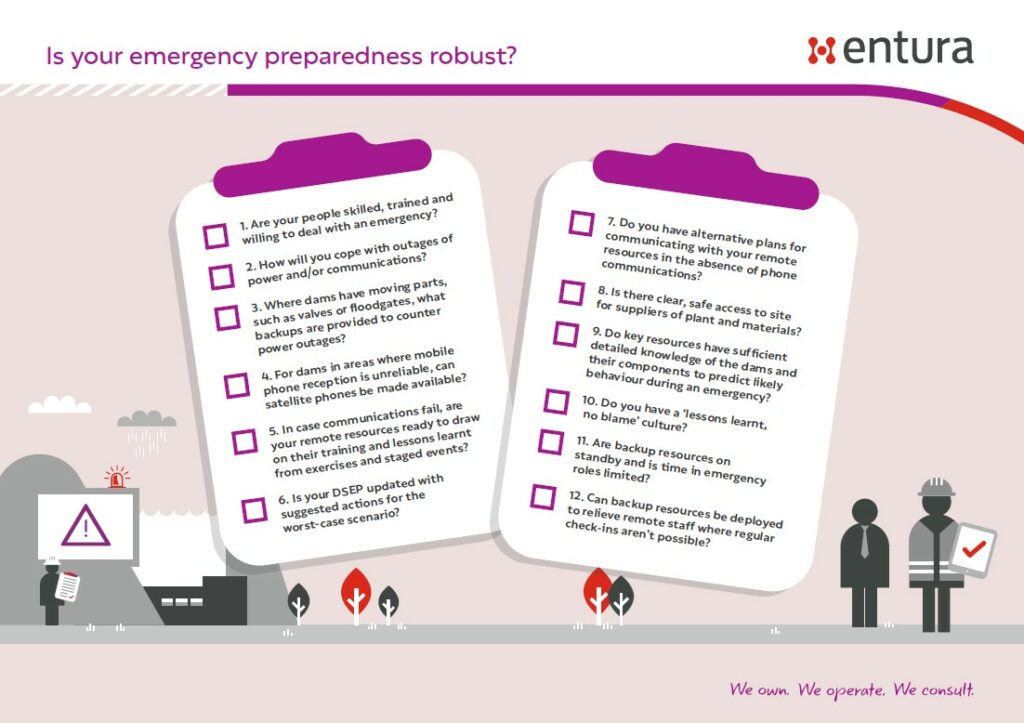
If you would like support with your emergency planning, contact Richard Herweynen or Phillip Ellerton.
About the author
Jamie Cowan is a senior dams engineer at Entura with over 2 decades of civil engineering experience in the UK and Australia. His experience includes the management of investigation, design and construction projects in the civil, dams and water industries. He has worked across all stages of project delivery, from feasibility to the commissioning of assets. He has provided construction support roles during dam construction and upgrade projects, and conducted intermediate and comprehensive inspections of dams for water authorities in Victoria.
MORE THOUGHT LEADERSHIP ARTICLES
Engineering – by humans, for humans
When engineers think about the future, do we get so engrossed in the complex technical problems that we don’t attend enough to the human angle?
Engineers have a reputation, whether rightly or wrongly, for being poor communicators, working obsessively and in isolation, and focusing on the immediate goal rather than its impacts on communities. Often, clichés have a basis in truth. If we are going to shift perceptions, we need to start by thinking about the way we work and the leadership we show to the next generation of engineers.
There’s no way we can predict the major developments, challenges or solutions of the next five or six generations of engineering careers. What we should focus on is what we can do right now to lead change in our profession and our communities – and I think the keys are communication, collaboration and community.
Communication
I recently listened to a podcast in which two energy market experts talked with a power system engineer. They discussed all sorts of technical matters relating to frequency and voltage control. I love those topics, but this conversation was limited and uninspiring because the participants simply didn’t have a common language or understanding.
We need to learn to communicate in ways that a variety of people can understand. That will mean better conversations with the people who can help our work have greater impact, and it will help our communities to appreciate the importance of our work in their lives.
It’s too easy for us as a profession to sit at our desks or stand under our hard hats and luxuriate in how clever we are, and then bemoan how so many people have no idea what we do and don’t value our work.
When things that involve engineers go wrong, a flurry of opinions erupts. Failures such as the blackout in South Australia, or the cladding issues at the Grenfell Towers, or issues with airlines or bridges or dams all lead to our communities questioning and debating engineering practice. Engineers tend to try to stay out of this rough and tumble for fear of being misrepresented. Yet maybe it’s better that we do engage where we can, since being misrepresented on a small issue is better than allowing a groundswell of misguided public opinion due to a lack of understanding of engineering principles.
We need to try to better explain our work and find simple ways to convey the complexities of the decisions that we make.
Collaboration
The world is far more complex now than it was a century ago – but it is impossible to imagine what level and pace of change future generations will experience. If we want to transform our world or help build a better future, we can’t do it by ourselves.
Engineering no longer operates in isolation, if it ever did. We must collaborate across the engineering team and across other professional disciplines to achieve truly effective development for our communities. Sometimes we may need to focus a little less on technical delivery as a primary outcome, and increase our recognition of the value gained by engaging successfully with the communities on whom the project relies for success.
Collaboration makes our work more effective, and exposes us to a wider range of inputs and values that we can incorporate into our designs and processes. Engineering can be a leader but it can also be a facilitator for better outcomes when we draw on, listen to and learn from the other experts involved in other aspects of our projects.
Community
Engineering work almost always benefits more people than merely the one who pays the bill. Much of my work is in connecting wind farms and solar farms to the grid. Mostly my work is paid for by the owner of the farm, and while it delivers direct benefits to the owner through return on investment, it also affects everyone connected to the nearby network. It affects the network service provider and market operator, it pays salaries, and it supplies the clean energy that helps the country reduce emissions and meet its international targets. In other words, my work, which may seem intangible, has tangible effects in the real world.
If we agree that our labours produce real impacts, we need to take better care to fully consider the wider consequences of our work, which often has the potential to cause ‘collateral damage’. We can’t build a road or a wind farm without changing the landscape. When we build a machine, it uses energy and may emit pollutants; and it reduces reliance on manual labour, which may put someone out of a job. There may be a risk to lives, livelihoods or the environment if something goes wrong.
Do we always make decisions about these matters with the community front of mind, or do we place our clients on the higher pedestal? This is a tricky area and I’m not espousing a puritanical approach. However, if we knew in 1919 what we know now about lead poisoning, acid rain, greenhouse gases, scarcity and general sustainability principles, what different choices could have been made?
In a time of automation, we need to think about benefits and risks and how they affect our communities. On one occasion early in my career, I designed a controller to turn on and off a couple of compressors at a power station. I wrote some code to balance the run hours. A few months after the new system was commissioned, I asked one of the operators how the system was going, in terms of the run hours management, and he said ‘you’ve done me out of a job’. I hope he was joking. The task he’d been doing wasn’t particularly important, but there was value in having a person who was in tune with the equipment to take care of it, and there was also value in giving that person dignity through work.
My point is that we must keep our communities foremost in our minds as we go about our work. It’s not just about what we produce. It is the way we work and the people we choose to work with and for. Our influence on the development of the next generation of engineers perhaps has more impact on communities than our actual work outputs.
Through communication, collaboration and community, engineering can be both ‘more human’ and ‘for humans’.
About the author
Donald Vaughan is Entura’s Technical Director, Power. He has more than 25 years of experience providing advice on regulatory and technical requirements for generators, substations and transmission systems. Donald specialises in the performance of power systems. His experience with generating units, governors and excitation systems provides a helpful perspective on how the physical electrical network behaves and how it can support the transition to a high renewables environment.
MORE THOUGHT LEADERSHIP ARTICLES
Becoming the Battery of the Nation
This article appeared first on the International Hydropower Association blog.
How can a small island become a giant battery for a nation? We’re finding the answers in increasing interconnection, developing new pumped hydro and repurposing our existing hydropower assets.
Tasmania is a small island state, with excellent water and wind resources. We’re powered mostly by an extensive hydropower system developed over the last hundred years – supplemented with newer wind developments. We’re connected to Australia’s National Electricity Market by an interconnector running across Bass Strait to the mainland. This has allowed us to trade in the national market for some time now, but as thermal generation progressively retires and Australia embraces greater proportions of variable renewables, the future national market will be vastly different. It will be characterised by low-cost variable renewable energy sources firmed by dispatchable storage and generation.
With Tasmania’s fantastic natural resources, established hydropower system and expertise, we want to be the ‘Battery of the Nation’, offering the generation and the storage and system support needed to help Australia achieve a clean, reliable, affordable energy future. Our Battery of the Nation vision is shaping up to be one of the most credible, competitive and coordinated solutions, able to be built in stages, aligned to market drivers.
In a nutshell, the Battery of the Nation means generating more renewable energy from our hydropower and wind assets, developing more storage solutions in the form of pumped hydro and building more interconnection to the mainland so that we can get our product to the national market to quickly and reliably support variable generation.
With the support of funding from the Australian Renewable Energy Agency (ARENA), we’ve been making progress towards this vision on a number of fronts.
Connecting the battery
Batteries aren’t much use if they’re not connected, so we need more interconnection to mainland Australia to get the power to where it’s needed. The initial business case for a new, second interconnector between Tasmania and mainland Australia shows it stacks up, and federal funding has recently been secured to fast track this 1200 MW interconnection project, known as Marinus Link.
Priming the pump
Around the world, significant investment is being made in new technologies such as grid-scale batteries and solar thermal projects, yet pumped hydro remains the most viable technology for longer term storage (greater than eight hours). Our state has significant pumped hydro potential and our existing hydropower assets offer excellent potential to repurpose and create cost-effective pumped hydro. We’re filtering down the possible pumped hydro options to identify around 2500 MW of future potential. The three most promising sites offer between 12 and 31 hours of storage and would cost around AUD 1.5 million / MW to develop. Further feasibility investigations will identify which one of these three will be the preferred option that can be ready to take advantage of more interconnection.
Redeveloping existing assets
We are also focusing on how to get the most out of our existing hydropower assets by repurposing and futureproofing them for a transitioning electricity market. The Tarraleah scheme in Tasmania’s central highlands was commissioned in the 1930s and our studies have been considering whether the scheme should be progressively refurbished or redeveloped. Redevelopment would more than double the scheme’s capacity from 104 MW to up to 220 MW – contributing to Battery of the Nation targets. By converting the station to flexible and fully dispatchable operation, instead of just baseload, it could flexibly boost output at times of high market demand and provide the ancillary services likely to be increasingly valued in the market. It is also expected to have flow-on benefits for the entire cascade of power stations below it.
We are also continuing major refurbishment and upgrades of other existing hydropower assets so that we can get more generation, efficiency and longevity from these assets to support our plan to become the Battery of the Nation.
Benefits for our island and the nation
The Battery of the Nation vision offers economies of scale and diversity by combining flexible, reliable renewable energy resources with cost-competitive, large-scale storage that can be built in stages, aligned to market drivers.
Battery of the Nation is designed to serve and support our local and national communities. Across the nation it will contribute to achieving lower power prices, reliable and secure energy supply, and meeting sustainability targets. It will also offer specific benefits to Tasmania through energy security and economic stimulus.
Battery of the Nation is a bold and bright vision to unlock our potential to contribute to the nation. It’s an example of how to reimagine hydropower and storage for the new market paradigms of a shifting energy future.
Can the power grid weather the weather?
Even a single day of load shedding makes people doubt the national grid’s robustness. How will the grid cope if we experience extreme weather conditions more often?
Things get hot in Australia. They can get smoky, or wet, or cold. Australia’s beauty is in its ruggedness, its unpredictability and its diversity of natural environments. It’s what Dorothea Mackellar captured so well in the famous Australian poem ‘My Country’ – a ‘sunburnt’ land of ‘flood and fire and famine’, with ‘droughts and flooding rains’.
As dramatic weather patterns become more intense and more frequent, the electricity grid must be robust, or at least be managed to adapt to short-term challenges.
If we get the design standards right and if conditions fall within the expected extremes contemplated by the framers of the standard, then everything works. However, what happens when conditions are abnormal? In heatwaves, we see people hosing the rail network to stop expansion. We’ve seen hosing to cool distribution power transformers at peak times too. But there’s only so much water and so many hoses that we can deploy when the heat is on. It’s not a sustainable solution.
Can we manage?
Yes … but we must manage actively. Business as usual will not be enough. Consumers will not tolerate lower levels of reliability based on the weather. So something has to change.
There are a few mutually supporting paths we could take, including (1) considering extreme temperature ratings and improving the reach and spread of weather monitoring and weather-dependent grid management; (2) adjusting standards to contemplate higher temperatures; and (3) reducing our reliance on high flows to deliver peak demand.
1. Consider extreme temperature ratings
Incentives already exist for our network service providers (NSPs) to release hidden capacity in networks. The incentives remain a small percentage of the overall regulated income they receive. The contemplation and control of realistic ratings under unusual weather conditions could be made more attractive to our NSPs. The NSPs would then be more likely to make these opportunities for capacity benefits transparent to the regulator and the public.
Generators are now being required to stipulate capacity at higher temperatures, but this is not being applied universally across existing plant. As we saw in Victoria this summer, the market is very reactive to the unplanned withdrawal of power from large thermal units – as much, if not more, than it is to variations in wind and solar power. Thermal machines have shown themselves to be sensitive and not always robust in prolonged hot spells.
2. Change the standards
If maximum temperatures continue to climb, our standards or ratings may need to be adjusted to suit. In a global market, we have to be careful about being too ‘special’ or we’ll end up paying for specifications that cost more than the benefits they deliver. A half-way position may be for generators to estimate their capacity in relation to temperature conditions and require tuning of these estimates over time. This would at least give us an idea of the temperature effects on production across the fleet. The results of this might then inform the need for changes to standards or at least build quality to relieve unmanageable reductions.
3. Reduce reliance on high flows
We’ve seen the effect that emergency events such as storms and fire have on the grid. Storms are managed through localised declarations of special constraint sets. They’re also generally short-lived. As we saw with the Tasmanian bushfires this summer, smoke and fire can affect a transmission corridor for weeks at a time. Because intense storms and fires tend to be rare, the market can take some time to adapt. Some planning or scenario work by AEMO might help prepare the market and reduce the impact on supply.
Reducing our reliance on high flows to regulate price or maintain supply may also be valuable. This suggests a need for storage/s at opposite ends of tie lines and interconnectors so that short periods of constrained flow can be compensated partially or fully by the far-end storage.
We may also need some flow-path diversity on critical corridors or on corridors that link dispatchable generation sources with loads.
There’s little doubt that Australia will experience more frequent and intense floods, fires and heatwaves. In our ‘sunburnt country’ we need to keep our eyes firmly on the future of our climate, and we must build resilience into our generators, grid and market systems.
If you would like to find out more about how Entura can help you navigate your challenges in the electricity market, please contact Donald Vaughan on +61 3 6245 4279.
About the author
Donald Vaughan is Entura’s Technical Director, Power. He has more than 25 years of experience providing advice on regulatory and technical requirements for generators, substations and transmission systems. Donald specialises in the performance of power systems. His experience with generating units, governors and excitation systems provides a helpful perspective on how the physical electrical network behaves and how it can support the transition to a high renewables environment.
MORE THOUGHT LEADERSHIP ARTICLES
Should you upgrade or replace your SCADA system – which option is best?
New functionality, increased visibility of plant, greater security … SCADA systems are rapidly advancing. So, should you stick with what you have, upgrade some components, or embrace a complete replacement?
This is an important and complex question for power and water owners, operators and utilities to consider. As SCADA systems become obsolete, outdated or unsupported, a range of risks come into play – so you need to carefully weigh up your options in terms of benefits and costs. Choosing the wrong system could affect your business operations or your future upgrade options.
The first step in your decision making must be to explore and understand the available SCADA options in the context of your business strategy. SCADA systems are too great an investment and too important for ad hoc or hasty decisions. This is the time for a clear-headed view of your business goals over the long term, and how your choice of action will support achieving the outcomes you seek.
In the context of this strategic view, you now need to objectively assess the value and relevance of your existing SCADA system and identify if the entire system needs to be replaced or whether some devices or software can be reused. Let’s look at ten key considerations in the decision:
1 System architecture: When you introduce new equipment or systems, your system architecture is likely to be affected. Changes to system architecture can affect the reliability or operation of your plant. A partial upgrade may or may not significantly affect the system architecture – it really depends on the changes made. The system architecture following a total system replacement may be dictated by the vendor you select, so keep this in mind when selecting vendors. Does this system suit your business or the vendor supplying it? Also make sure that your system architecture is thoroughly and accurately detailed, and keep your SCADA strategy in your back pocket for reference throughout your journey.
2 Reliability: If parts of your existing SCADA system are reused, will this impact the reliability of the new system? Depending on the age and condition, there may be a greater risk of unreliability with the reuse or partial upgrade of components vs a complete replacement. The key here is to ensure the right people can evaluate the system and components with the knowledge of how to overcome these challenges. To minimise the likelihood of equipment failures and achieve the best outcome in terms of reliability, sometimes the best option is to carry out a full replacement.
3 Costs: A complete SCADA replacement is a costly exercise but at some point you can’t keep delaying a major outlay by only fixing the immediate concerns. Just like the increasing costs of servicing and replacing parts on an ageing car, at some point the ongoing incremental costs may no longer be worth it, and you may have to consider a total replacement. Regardless of the option you choose, having the expertise to make this call and carefully planning/estimating the work will reduce the risks of unexpected costs. The key decision-makers in your business will need to explore how to balance the initial outlay against the potential cost savings to be achieved through limiting the duration of system outages and attaining a longer whole-of-system life.
4 Functionality: The range of SCADA devices is extensive. A simple device may be cheap but it may not have been designed and built to meet high performance and reliability requirements, and it may not have the management functionality or redundancy capability you need. Your choice of functionality is partly a matter of initial cost, but you also need to carefully consider how much you need the extra functionality, what savings that functionality can offer over the longer term, your tolerance for failure, and the cost of failure to your business.
5 Compatibility and standardisation: When devices and software are upgraded or replaced, compatibility challenges and limitations may arise when interfacing with existing system components. Carefully assess your existing system and verify that the specifications and functionality of the proposed equipment are sufficient. Also consider the benefits of standardisation of system components. Standardising equipment throughout your site or sites can greatly speed up fault diagnosis, reduce design costs, minimise the need for more training, and lower your spares requirements.
6 Human interface: When your SCADA system upgrade includes the Human Machine Interface (HMI), identify which parts of your HMI screens work well and which don’t, and consider the option of designing your screens from the ground up. Avoid cluttered interfaces and consider dashboards for a single, easily interpreted overview of parts of your plant or station. If you’re changing your screen navigation and displays, you will need to allow for additional training to ensure your people are confident and capable of operating and monitoring the new system. Upgrading your HMI with a newer version of the software may be the best way forward depending on your requirements. This may require less financial outlay in terms of licensing, engineering and training costs and may be less intrusive on your system. If your system assessment warrants a complete replacement, you should carefully evaluate alternative HMI solutions to achieve the right functionality, product roadmap and financial outlay.
7 Security: How will upgrading parts of your SCADA system affect overall system security? SCADA security has evolved dramatically in recent years. Managing today’s SCADA systems can be a challenge without the right security precautions in place. Because SCADA system attacks exploit both cyber and physical vulnerabilities, it is critical to align cybersecurity measures accordingly. System security challenges of partial upgrades may not be able to be overcome depending on the age and type of equipment. So implementing a new system with the latest security technology is becoming the best option for limiting your exposure to attack.
8 Future-proofing: Just as you need to plan your pathway to implementation, you also need to keep your eyes on the future. If you’re upgrading old components, factor in the end-of-life date for support. If a device becomes obsolete, you’ll need a changeover plan to limit the impact on the system. Even if your upgrades give you the functionality you need now, what will you need in the future? Transitioning to a new SCADA system will introduce new functionality that is likely to increase the effectiveness of your operations and maintenance, and give you the opportunity to embrace the potential of big data, machine learning and artificial intelligence.
9 Pathway to implementation: Whatever the journey you’re on, you need to think about the path ahead so that you don’t encounter unexpected obstacles such as hidden costs or schedule blow-outs. Identify what upgrading may mean for your existing system and what limitations your system may have. Will your historical data need to be migrated to your new system, and, if so, how will this need to be handled? Upgrading to a new version of your SCADA system may be the easiest solution, but if you decide you need a new system, you’ll need to carefully handle your historical data and massage the data into the correct format for your new system.
10 Testing and commissioning: During the design process, contemplate how your system will be implemented and commissioned. Commissioning new equipment instead of reusing old technology may reduce the risk of incompatibilities and unusual operations. It may also reduce the time required for testing due to thorough system factory acceptance tests. Retesting of old equipment may have considerable impacts on your plant or station operations. The testing process and sequence is another key item that can make or break your system implementation. Assess how your system will behave during the cutover process and how the correct sequence or test process could reduce or eliminate your plant or station downtime.
Deciding whether to upgrade or completely replace your SCADA system is very much a case-by-case situation – but you’ll find the right solution if you consider all the key issues carefully and have your decision assessed by the right people and carried out objectively.
If you would like to discuss your SCADA challenges and opportunities, contact James Devine on +61 417 389 713, Patrick Pease or Shekhar Prince on +61 412 402 110.
About the author
James Devine is Entura’s Specialist SCADA Engineer and has over sixteen years’ experience in SCADA and automation design, implementation, commissioning and project management. James has worked with clients both within Australia and overseas on a diverse range of systems including solar and wind farm SCADA systems, substation SCADA and automation systems, hydro and gas generation SCADA systems, water and wastewater SCADA systems, and wide-area SCADA and telemetry systems. James has considerable experience reviewing many clients’ existing systems and proposed designs, as well as providing specialist technical advice for single-site SCADA and automation systems through to wide-area SCADA systems and master stations.
MORE THOUGHT LEADERSHIP ARTICLES
Are you an asset manager or an ‘asset guesser’?
In the hydropower sector, we’re all trying to do more with less. And as hydropower assets age, there’s always more to be done.

Gut feelings and guesswork won’t be enough if you want to make the best use of your asset management budget and keep your assets safe, reliable and profitable.
Today, ‘asset management’ is a much more sophisticated practice than twenty to thirty years ago. Back then, we’d refurbish or replace components at fixed time intervals (whether the work was needed or not), hoping that this would prevent or reduce breakdowns and forced outages. In most cases, this sort of scheduled maintenance was based on original equipment manufacturers (OEM) recommendations, best guesses or a mixture of both with very little evidence of root causes of actual or potential failures identified.
This maintenance attitude led to repeated failures. It also resulted in short-term planning. And, because of a lack of good evidence that current maintenance approaches were achieving direct positive business returns either in plant or financial performance, it increased the pressure to reduce maintenance budgets.
Asset management today
Hydropower assets are increasing globally, both in number and in size. So too, our knowledge of hydro assets continues to strengthen. We have much better understanding and insights now into how and why these assets wear out, how they behave, why they fail, and the ways in which they respond to various operating conditions and environments.
Operating conditions are constantly changing due to variables in the energy market, power purchase agreements, increasing expectations of customers, changing technologies and regulatory requirements, and more. So asset management needs to be flexible and to respond to the evolving context.
Today, ‘asset management’ is a trendy term – but there’s a very broad spectrum of practice across the hydropower industry, and it is a long path from basic approaches through to achievement of superior methods and strategies.
To achieve the lowest lifecycle costs for assets, as well as to minimise forced outages and breakdowns, power and water businesses need to see asset management as a crucial component of risk management and business strategy. It also needs to be viewed as an incremental journey of improvement, supported by processes and structures based on standards.
Ideally, your asset management policy, strategy, plans and activities should be based on the ISO/AS 55000 series of standards. The ISO 55000 standard series encourages aligning asset management with your broader organisational objectives, context and plans – and recommends that you regularly revisit this to be sure that alignment is maintained. This can now filter through your asset management policy and strategic asset management plan (SAMP), and be embedded in the reality of implementing your asset management plans.
In other words, your asset management policy provides direction which is aligned to your organisational context; your SAMP translates this; and your asset management plans act as the catalyst to create and sustain change in leadership, culture and asset management practice.
People, plant and process
Alignment with the principles of the ISO/AS 55000 standard series are fundamental to achieving the lowest lifecycle costs for hydropower assets. For success in your business you need to consider not only the physical asset but the entire delivery process, you need to understand what is required in each of three ‘P’s – people, plant and process – and you need an implementation plan to get you there.
Without people, we don’t have plant. Having the right people involved, right from conception, can make the difference between successful projects with years of profitability and projects that face years of increased expenditure and issues to manage. Ensuring that the right people have the right skills, training and competencies to carry out the right maintenance at the right time is paramount to achieving the plant performance you desire.
When it comes to plant, we recognise that, ultimately, all assets have a finite life – but our increasing knowledge of asset behaviour can help us to design components better for longer life and for greater cost-effectiveness and efficiency. By developing and implementing the right asset management techniques, you will increase the likelihood of your assets being profitable, reliable, available and safely operated – and staying that way. A strategic investment in asset management will more than pay for itself through increased benefits and decreased risks.
Turning to the ‘process’ element, we should recognise the importance of assessing, organising, planning, budgeting and reporting on the work effort – but there’s a need to ‘keep the processes real’. In other words, don’t implement processes for the sake of it, nor to try to address or mask problems in other areas that would be better to rectify than to over-manage. Processes should support the integration of the broader organisational context into operations and maintenance and then help to assess and report on effectiveness and performance.
By bringing people, plant and process together, and aligning asset management with your business vision and decision-making, you are far more likely to be able to get the best out of your valuable assets. And you’ll achieve a culture of continuous improvement and proactive, prioritised action – leaving no more room for reactivity and guesswork.
If you would like to discuss how Entura can assist you with assessing and managing your hydropower plants or other power or water assets to minimise risk and maximise efficiency and useful life, please contact Leigh Smith on +61 419 884 318.
About the author
Leigh Smith is a specialist consultant with extensive experience and proven ability in asset management, condition assessment, risk management and project management in the power sector, particularly hydropower. He has over three decades of practical experience with hydropower assets and has successfully delivered and project managed many major projects in Australia and internationally. Leigh has produced numerous asset management plans to support financial modelling and feasibility of major hydropower projects, as well as detailed 30-year asset management and maintenance plans that have been critical to the progression of projects around the world.
MORE THOUGHT LEADERSHIP ARTICLES
Asset management trends for profitable wind farms
How can a wind farm realise its full lifetime potential in an increasingly cost-sensitive market?

Until now, improving the wind industry’s profitability equation has been driven by increasing the size and efficiency of wind turbines, resulting in more energy produced for every dollar of capital expenditure. However, there’s only so far we can go with this approach.
To keep driving costs down and maintaining your wind farm performance, we now need to turn our focus to another aspect of the equation: a wind farm’s significant ongoing operational and maintenance (O&M) costs, which are set to increase as wind assets age. Achieving maximum yield at minimum risk and cost across a wind farm’s full operational life is a major asset management challenge, and much is yet to be learned.
In 2018, at the Wind O&M EU conference in Germany, I observed some international trends and perspectives on O&M that can offer useful insights for the wind industry in Australia. Although some aspects of the topic generated a deal of consensus, other areas are far less certain with many questions and possibilities yet to be fully explored.
Learn from other industries
Across the wind industry, there’s strong agreement that commercial returns for wind farms are not as high or as easy to obtain as they once were, and that reducing O&M costs on wind farms is critical when profit margins are being squeezed.
This may seem obvious, but the fact that we still need to articulate this point demonstrates that the wind industry has a significantly less sophisticated O&M approach than more mature industries such as oil, gas, other energy and heavy industries, and the IT and telecommunications sectors.
The wind sector should, and no doubt will, look to these more mature industries in the coming years for innovations that can be applied successfully to streamline our O&M and asset management strategies.
Plan for a longer life
Another implication of the relative youth of commercial wind farm development is that the industry has little practical experience with ageing wind farms – yet wind farms are set to get even older. Where it was previously the norm for a wind farm’s business case to be based on a 20–25 year life, it is becoming increasingly common for business case scenarios and asset management strategies to consider lifetimes up to and potentially beyond 30 years.
We need to be developing thorough and sophisticated asset management strategies that fully embrace the later stages of a wind farm’s life – not only the earlier stages in which O&M may have been conducted under contract with risks managed very effectively.
When we think about ageing wind farms, we weigh up the choices of continuing operations, decommissioning, or repowering with new turbines. From our understanding, it seems that wind farm repowering is only happening in locations with very friendly tariffs (such as a few areas in Germany), or where the existing project is fundamentally unsound from a technical and commercial perspective.
In Australia, full repowering with new wind turbines is not currently a commercially attractive proposition, and may not be widely considered for at least another decade. So, a wind farm’s extension of life will need to be achieved through effective O&M and refurbishment. I observed that some wind turbine owners and suppliers are beginning to think in more sophisticated ways about whole-of-life asset management strategies that maximise project value for the longer term, but it is still early days across the sector.
I also noted a range of diverging opinions about whether it is preferable for an owner to manage O&M through long-term comprehensive O&M contracts or whether risk is better mitigated by owners taking on the management of O&M themselves. Approaches vary depending on portfolio size, experience, capability and the general philosophy of the business. Clearly, this is not an area in which one solution will work for all.
Share information to build knowledge
Given the relative newness of the large-scale wind industry, and the need to squeeze every last drop from existing infrastructure, there is much to be gained from learning from and with each other.
Many industry players at the conference expressed a desire to see increased cooperation and sharing of information between different owners, operators and manufacturers.
The industry as a whole will benefit if SCADA system data is the property of the wind farm owner and shared more openly across the industry. Greater openness and availability of data will allow better benchmarking across turbine models scattered across the globe, enabling operators to better predict future costs and performance and incorporate reliability-centred maintenance.
Better benchmarking may offer insights into the extent of the performance improvements that could be gained on existing projects by adopting some available upgrade options. Many service providers are offering control system upgrades, aerodynamic improvements, yaw alignment systems, and advanced condition monitoring systems for increased availability – yet the industry is still learning how to translate this dizzying variety of rapidly developing technologies and options into a robust business case.
It can be difficult for owners to justify expenditure when the gains are uncertain, difficult to measure, and sometimes accompanied by drawbacks that are hard to quantify directly. For example, do you take increased generation at the risk of a reduced lifetime or increased maintenance costs?
If performance improvements of wind projects were more easily measured, we could more realistically quantify their impact on profit.
From these trends, observations and uncertainties, it’s clear that in any wind farm project – whether developing a new project or changing ownership of an existing project – we need to look very carefully at ongoing O&M costs, particularly as the increasing costs of end-of-life loom large. Thorough due diligence and realistic assumptions in this area will be vital for developing viable business cases across an increasing range of possible lifespans.
If you would like to find out more about how Entura can help you optimise your wind farm, develop an asset management strategy, or support you with due diligence services for proposed or operational projects, contact Patrick Pease or Silke Schwartz on +61 407 886 872.
About the author
Andrew Wright is a Senior Renewable Energy Engineer at Entura. He has more than 15 years of experience in the renewable energy sector spanning resource assessment, site identification, equipment selection (wind and solar), development of technical documentation and contractual agreements, operational assessments and owner’s/lender’s engineering services. Andrew has worked closely with Entura’s key clients and wind farm operators on operational projects, including analysing wind turbine performance data to identify reasons for wind farm underperformance and for estimates of long-term energy output. He has an in-depth understanding of the energy industry in Australia, while his international consulting experience includes New Zealand, China, India, Bhutan, Sri Lanka, the Philippines and Micronesia.
MORE THOUGHT LEADERSHIP ARTICLES
Early action is the best approach for operational environmental management
Building, maintaining and operating power and water assets involves a level of environmental risk. If you can identify and manage these risks early, your projects or operations are far less likely to run into trouble down the track.
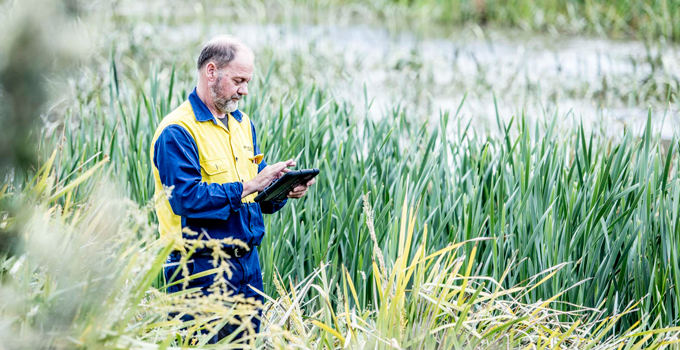
Power and water utilities can incur major penalties when natural values are insufficiently understood and poorly managed. Not only could the environment be damaged, but there could also be penalties for a compliance breach, increased costs and conditions for construction and operation, significant remediation costs, project disruption and delays, and delivery overruns.
On top of all of this, there’s no doubt that poor environmental management will damage your corporate reputation and reduce your level of acceptance by and engagement with the community and stakeholders, both at and potentially far beyond the local area.
Power and water asset owners and developers manage or have influence over large areas of natural assets. These environments often include flora and fauna on land and in waterways that are listed as threatened under state and national environmental legislation and/or international agreements.
A land manager or owner with a strong environmental management system will know and proactively manage these values. However, in many areas there is a lack of knowledge of natural values, which are consequently not included in an environmental management framework. These values are therefore at risk of adverse effects from operational decisions.
So what can you do to make sure you have a handle on your environmental risks?
Find out what you’ve got
A thorough review of available information will help you better understand the values you need to manage.
This means using existing data-sets and reports to understand the current knowledge base and identify any gaps. In other words, create an inventory of natural values for all your land and water assets. You will need to identify the flora, fauna and ecological community values on your land and in your waterways and lakes, and record their condition and their status.
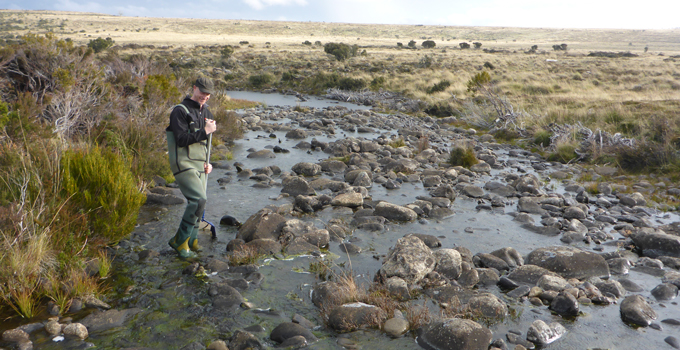
To understand the social values associated with your assets, you may also need to engage with other stakeholders and local communities to understand how they value and use your natural assets (e.g. fisheries, recreational users, water supply, transportation), as this will also influence management.
Incorporating the data into a spatial database accessible to everyone in the business will allow easy searching for flora and fauna values that may be affected by maintenance activities or new projects and ensure that relevant information about your natural assets is readily available for managers and field staff. However, this phase only identifies issues, and the degree of impact of a proposed management action on flora and fauna values is likely to require further interpretation by an ecologist.
If gaps are detected in the data or there is doubt about accuracy, field surveys can identify and verify natural values and record their condition. For example, vegetation and /or habitats have often been mapped from aerial photos and not verified in the field, so errors can arise in the attribution of a vegetation community or habitat type.
Understand your compliance requirements
Once you know what’s on your land or in your water, you can identify the potential regulatory and compliance issues.
Are there threatened species or communities listed under state or national legislation or international agreements? Are there weed or pest species or communities that have legislative requirements? Does analysis of existing water quality data highlight any trends that may affect values within the water-body or downstream (e.g. increased nutrient loading)?
If you already know what natural values you have on your land or water, you’ll be in a much better position to respond effectively to any legislative changes. You may even be ahead of the game!
Identify potential risks and their significance
Identifying and understanding risks to natural values under current and future operational scenarios is critical to successful and proactive environmental management. This requires some ‘big picture’ thinking in which the whole landscape, both terrestrial and aquatic, is considered.
A big-picture approach focuses on risks to ecological communities or functional ecosystems (e.g. wetland, lake or river) rather than extrapolating from localised information that may not reflect the broader risks. For example, to manage species at a habitat level rather than at site level, you need to identify and map habitat for threatened species across your natural assets as well as assess habitat quality.
In another example, a big-picture approach to water quality would involve having an understanding of the natural range of parameters at the local catchment scale, which may be different to recommendations in national water quality guidelines due to natural local conditions (such as the relatively low pH of tannic water bodies in peatland landscapes).

Many project risks can be mitigated if they are properly anticipated early and managed throughout the life of the project, minimising corporate, technical, environmental and social impacts and their associated costs. Having a comprehensive inventory of your natural assets will allow any threatened species or important ecological communities to be identified early in the planning phase for upgrades of existing assets or new projects. This will make the difference in understanding the effort required to avoid or minimise impacts.
The planning process is likely to be expedited because you will already know what your potential environmental impacts are and will have accounted for them in your project design, planning approval documentation and operational management plan.
This informed management approach also applies to maintenance programs, particularly weed and vegetation management, on easements and around assets. If you know where your high-value natural assets are, they can be accounted for in the maintenance program so that they will be protected.
Develop management approaches
Knowing which natural values require active management and which values may be best left alone is another key factor for successful environmental management.
Some natural values may be protected by default because they are associated with assets that are not accessible to the public (e.g. remote assets or those closed to the public because of safety risks). These natural values, particularly in intact remote wild areas, may be best managed by being left alone without any management intervention because they are not under pressure from human activities.
Other natural values may need active management and protection because they are under threat from human activities, introduced species or diseases. In this case, you need to consider the potential issues and consequences, plus the likelihood of them occurring, to evaluate the potential risk and significance of the issue.
Where the risk level is considered to be high, identify how the risk can be mitigated (e.g. restricting public access to a sensitive area while directing access to another less-sensitive area). Potential mitigation measures are generally best identified in consultation with other stakeholders, including user groups and the local community, to ensure that the measures are supported and endorsed by the community for greater success.
For example, an important conservation site such as a lake that supports threatened fish as well as recreational fish species will require a management approach supported by the angling community. That might mean developing hardened access points (e.g. tracks and boat ramps) in less-sensitive areas supported by anglers. Otherwise anglers will continue to develop their own access points, degrading lakeside habitats and potentially affecting important breeding or foraging habitat for threatened species.
Identify opportunities
If you proactively identify and manage the environmental values for which you are responsible, you may even stand to reap a range of extra benefits. You may identify natural values with potential economic and environmental value beyond the obvious.
For example, native vegetation in good condition on your land could be used to offset the loss of native vegetation associated with other projects you undertake. Or, possibly, land in good condition could be made available to other proponents for purchase as offsets for their projects. These hidden opportunities could be very valuable and make a major difference to project viability.
If you can make structured and systematic efforts to manage environmental issues proactively, you are far more likely to achieve environmental sustainability, as well as pave the way for project success, social licence and a positive reputation. For power and water asset developers and utilities, a genuine commitment and responsible approach to achieving greater operational sustainability is increasingly recognised as a key marker of success and corporate reputation.
Don’t wait. Act now to understand and manage your environmental risks.
If you would like to discuss how Entura can assist you with minimising risks and increasing sustainability, please contact Ray Brereton on +61 417 336 407.
About the author
Dr Eleni Taylor-Wood is Entura’s Principal Consultant, Environmental and Social Science. Eleni has 20 years’ experience successfully managing large-scale, complex projects, as well as providing expert advice and independent review for a range of infrastructure and planning projects. She has worked on projects around the world including in Australia, Mozambique, South Africa, Iceland, Colombia, India, Malaysia, China, Solomon Islands, Fiji and Papua New Guinea. Her experience includes environmental and social impact assessment and management, strategic management of wetlands and waterways, feasibility and approvals for new hydropower projects, environmental flow determination and assessment, and sustainability assessments. Eleni is currently one of eleven accredited assessors worldwide under the Hydropower Sustainability Assessment Protocol.
Raymond Brereton is a senior ecologist with 30 years’ experience in the field of fauna and flora survey and management. He has been involved in assessing the impacts of development on flora and fauna and their habitats, as well as providing advice on the development and implementation of policy and prescriptions for fauna and flora management across south-eastern Australia (Queensland, New South Wales, Victoria, South Australia and Tasmania). Raymond has a high level of technical expertise in the assessment and the management of threatened species and communities in both terrestrial and aquatic ecosystems in compliance with regulatory requirements
MORE THOUGHT LEADERSHIP ARTICLES
Six sink-or-swim questions for the modern dam engineer
Technology and expectations are constantly evolving for the dam engineer but the ultimate goal remains the same: safe, lasting dams. Are you fully equipped to make that target a reality?
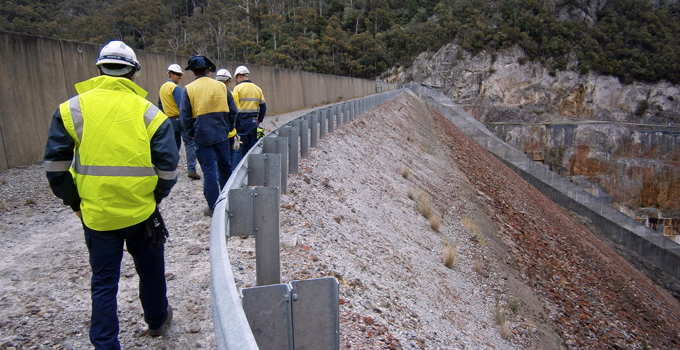
All industries and jobs change over time, but for dam engineers there has been very significant change on many fronts over the last few decades. Improvements and new developments in technology and construction methods are constantly emerging. Expectations of the role continue to broaden beyond technical skills. And, since the 1970s and 1980s, dam engineers have needed to keep abreast of the surge in legislation, regulations and procedures for modern dam safety programs which emerged in the wake of major dam failures.
Of course, generational change is also always occurring. For organisations that have experienced bubbles and dips in the age distribution of their workforce, this is particularly challenging, and gaps may emerge in particular experience brackets. As older engineers move towards retirement, they take with them the knowledge of the generation who designed and constructed older dams that may still retain original technology.
The modern dam engineer therefore faces a dual challenge: not only to stay up to date with the latest technology and requirements, but also to maintain an understanding of older equipment and instruments.
For dam owners and managers, success in your business strategy will depend on ensuring that your dam engineers have the right skills and competencies. Investing in workforce planning and training for your people will help you manage risk, deliver your key functions, and move toward your long-term business goals.
To me, the following key factors are essential for the modern dam engineer to keep on top of our fast-changing profession.
1 – Are you keeping up with changing technology for dam engineering and monitoring?
Dam engineering and monitoring technology keeps improving, and the pace of change gets faster all the time. Defensive measures to ensure the safety of dams have improved greatly over recent decades, such as filters for internal erosion protection, and corrosion protection in ground anchors.
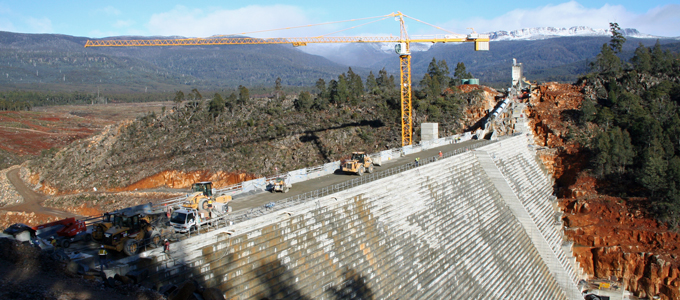
Methods for analysing dams have also become more sophisticated with increased computing power and more advanced analysis software, in particular for extreme floods and non-linear analysis for seismic loading. The modern dam engineer also has access to contemporary geotechnical and structural monitoring instruments, which are useful for interpreting the behaviour of a dam.
It is no longer acceptable for a dam safety engineer to rely only on visual inspection and monitoring data. Modern dam engineers need to understand the underlying design philosophy and keep up with the latest construction practices and their impacts on dam behaviour. We also need to maintain an enhanced understanding of the performance of dam structures and appurtenance structures under various load conditions.
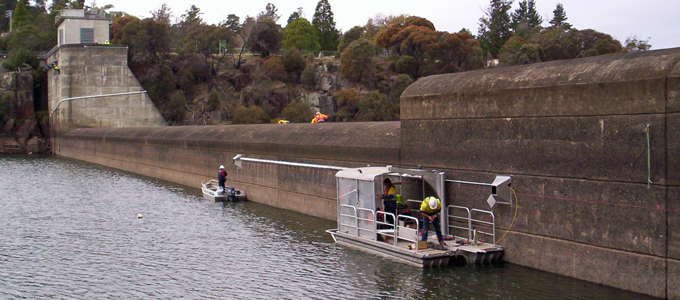
In recent years, advanced instruments and automated data acquisition systems have enabled real-time monitoring of dams and near-continuous time history records for the dam engineer to evaluate.
Dealing with this great volume of data can be very time-consuming and beset by a range of challenges, so it is important that the modern dam engineer embraces the best technological advances to streamline the collection, organisation, interpretation and presentation of the data so that it serves its ultimate function: to quickly identify pertinent issues or anomalies.
2 – Are you guided by risks, with a thorough understanding of failure modes?
The modern dam safety engineer needs a thorough understanding of dam safety risks and assessment practices. Risk assessment now defines the dam surveillance scope and program, and failure modes analysis forms the foundation of a risk-based dam safety and surveillance program.
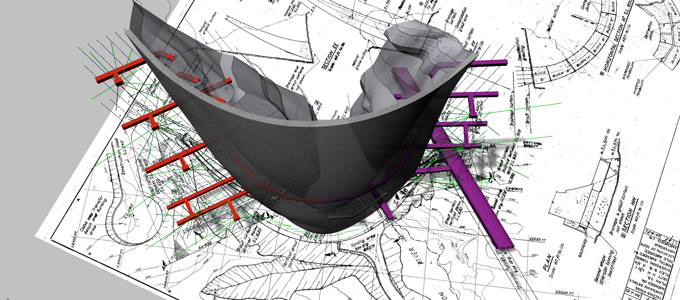
When assessing failure modes, the dam engineer needs to work alongside geologists and construction engineers to understand the impact of construction and to identify features that are not readily visible through visual inspections but could affect the safety of a dam.
3 – Do you consider and understand the impacts of environmental changes?
For dam engineers, consideration of environmental factors is nothing new. However, the potential for changes in weather patterns, and the consequences of these changes, are increasingly important concerns for the modern dam engineer.
In an era in which the climate is changing, dam engineers now need to, for example, consider changes in the size and frequency of rare flood events when evaluating the required spillway capacity, or investigate the adverse impacts on embankment dams during long periods of low rainfall, which could cause desiccation and cracking of the clay material.
4 – How do you prioritise activities within constrained budgets?
Some large dams are now more than 50 years old and are in disrepair or inadequately monitored. However, the limited budgets of public and private sector dam owners can constrain their ability to fund comprehensive surveillance programs and dam remediation works.
This places increasing pressure on the modern dam safety engineer, who should recommend a prioritised program of risk-reduction work within the context of the owner’s financial constraints, to ensure that risks are adequately managed.
5 – Can you engage effectively with the dam’s community and stakeholders?
Dam engineers are increasingly required to consider the safety of dams in the context of the community’s cultural and heritage interests. Community scrutiny of the safety of a dam, or of planned works to improve safety, continues to increase.
With the advent of social media, public scrutiny is now immediate, constant and global. This is a challenge for modern dam engineers, who are not often trained in community engagement.
6 – How safe are your practices?
Over the past two decades, workplace health and safety requirements have had a significant impact on dam engineering. Although not a new responsibility, the regulatory requirements to ensure safe construction, operation, maintenance and decommissioning have increased, requiring modern dam engineers to be aware of legal requirements and safety standards beyond their core skills.
In a world in which the availability and uses of water are increasingly in demand and under strain, we need safe, reliable, enduring dams. Investing in the skills and competencies of modern, professional dam engineers is a critical step towards achieving that goal.
If you would like to talk further about developing your dam engineers, or filling gaps in your own expertise, contact Richard Herweynen, Phillip Ellerton or Dale Bryce.
MORE THOUGHT LEADERSHIP ARTICLES
Do you have the right SCADA strategy for your business?
Installing a SCADA system is a major outlay. With the ever-increasing pace of technological change, how can you ensure your new system or upgrade will repay your investment and deliver maximum benefits?
It’s almost impossible to imagine running a business in the power or water sector without SCADA and automation. The significance of the benefits of visibility and automation of plant and processes, particularly for remote assets, is unquestionable. However, to get the best return on your investment, your system needs to be functioning at its best.
Loss of SCADA means loss of visibility, production, time and money, but basic functionality is not enough. If your SCADA system is functional but not optimal, it is still opening you to risk . You could be missing out on valuable opportunities to increase your business efficiency, make smarter decisions and continuously improve your processes to achieve less downtime and more effective maintenance.
This means that any new system needs to be reliable, up to date, and future proofed – able to be effectively expanded and updated to accommodate developments in technology and changes in your business. And, for an older system, it means that you need to assess whether your system is still meeting your requirements or if it could be upgraded to do more for your business and protect you against risks. If an older system is still reliable and robust, you may not need to retire it or make wholesale changes.
Choosing a new system or approaching an upgrade
The first step is to explore and understand your options in the context of your business strategy. The right system isn’t necessarily going to be the one that is the latest trend or has the most bells and whistles – it will be the one that is best suited to the particulars of your business and your business goals.
Consider these questions:
- What are your short-term and long-term business objectives? Is the system you are considering consistent with these objectives?
- What can the available technology or systems do for your business today? For example, how will the technology or system eliminate or reduce current inefficiencies and costs?
- What is the potential of emerging technology to meet your future needs? For example, what smart functionality might really help your business over the long haul? Could improvements in modern SCADA systems be able to automate more tasks, integrate with other systems, or streamline reporting?
Before you acquire a SCADA system, fully explore the benefits of a comprehensive strategy to manage the system over its lifecycle, taking into account the lifecycle costs, benefits, risks and opportunities. Your strategy should also facilitate reliable systems that do not compromise anyone’s safety or wellbeing, that minimise impacts on plant or the environment, and that optimise the value obtained from the system.
As you proceed with the project, you’ll need to consider who will develop your functional requirements and standards for the SCADA system. Don’t buy a specification that was developed for use by other entities. Your requirements and expectations must be documented, and the system needs to meet them. Requirements should support the strategic objectives of your business, addressing key topics such as security, availability, performance and disaster recovery.
Start visualising your planned system through a high-level network diagram detailing interfaces to other business systems, operator stations and to other external links. Then carry out a preliminary gap analysis to identify disconnects between existing and future requirements. This will help you focus your efforts and make informed decisions.
When it comes to deciding on the system, consider procuring ‘off the shelf’ applications and minimising customisation and software development where practical. This may offer savings in the long term when upgrading is required, as some customised functionality may become incompatible with new versions.
Once you’ve selected a vendor or system integrator, consider whether you have the required skills and experience to evaluate their performance and to determine whether the system is being designed and implemented such that it will meet your requirements, standards and expectations. If not, involve someone who can oversee the project technically as ‘owner’s engineer’. Engaging someone skilled in design, implementation and testing will reduce your technical, operational and financial risks.
Planning to retain but improve your existing SCADA system?
It’s likely that there’s still a lot of value in your old SCADA system. To get the most out of your prior investment, try to identify which parts of the system still have worth or could be translated into a new system, and which parts need to be augmented or replaced.
Unreliable, unsupported, obsolete equipment and software should be the first to go; proprietary hardware or software should also be considered for replacement to allow for open connectivity, which will offer you a more flexible system architecture and greater software functionality.
From your old SCADA system, you may be able to retain your SCADA system point database through capturing and documenting it. You might be able to transfer or convert your historical data into the new system. Or you could consider developing your SCADA screens with a level of familiarity to your previous screens. But regardless of what you retain, you’ll require improvements that allow seamless changeover of your operations.
Other important considerations when you’re planning to improve an existing system are cyber security, redundancy, situational awareness and alarm rationalisation.
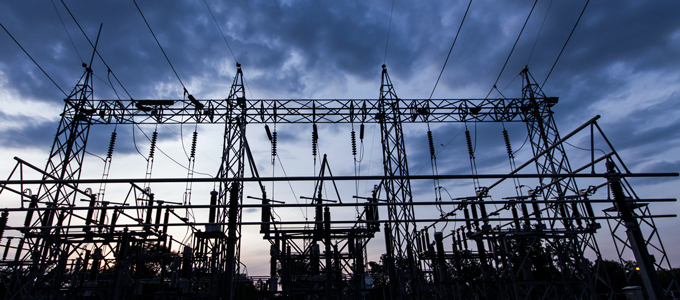
SCADA systems are too important and too great an investment to risk making the wrong choice . You need to be confident that your investment in SCADA will deliver the greatest level of benefit and reliability over the longest time. The best way to ensure a good decision is by putting in the groundwork to really know what’s available and what’s best for your business. Getting it right will free you up to reap the rewards of greater productivity and profitability.
If you would like to find out more about investing in a new or improved SCADA system, contact James Devine on +61 417 389 713, Patrick Pease or Shekhar Prince on +61 412 402 110.
This is the first article in a series on SCADA. In subsequent articles we will explore SCADA replacement and upgrade in more detail, investigate what you need to include in your SCADA system to improve operator safety and increase business efficiencies, and consider the financial case for a SCADA system implementation. Follow us on Facebook, Twitter or LinkedIn for future updates.
About the author
James Devine is Entura’s lead SCADA specialist and has over fifteen years’ experience in SCADA and automation design, implementation, commissioning and project management. James has worked with clients both within Australia and overseas on a diverse range of systems including solar and wind farm SCADA systems, substation SCADA and automation systems, hydro and gas generation SCADA systems, water and wastewater SCADA systems, and wide-area SCADA and telemetry systems. James has considerable experience reviewing many clients’ existing systems and proposed designs, as well as providing specialist technical advice for single-site SCADA and automation systems through to wide-area SCADA systems.
MORE THOUGHT LEADERSHIP ARTICLES
Can big data and artificial intelligence transform the wind sector?
Big data and advances in artificial intelligence hold extraordinary potential for transforming the energy sector. But is change in the wind sector likely to be transformational, or can we expect only incremental performance improvement?

For utility-scale wind farms, the benefits of big data technologies may not be on the scale of the transformations occurring in distributed generation, energy storage and demand management – but there is no doubt that there is potential for incremental improvements in the efficiency and cost of wind turbines, improved energy forecasting, and better fault prediction and detection – and that means opportunities for competitive advantage.
Big data, machine learning and AI
Big data is the result of having more data sources and more storage. We are now flooded with data of all types and we have the ability to store it, but the key challenge is making that data useful so that it can create value. Machine learning deals with computer models that apply algorithms allowing them to learn from experience, modify their internal rules and make better predictions. When you put the two concepts together, big data enables machine learning to act like an artificial intelligence (AI), creating systems that mimic cognitive functions such as learning or problem-solving.
Underpinning all this are computer models, which translate input data into outputs or predictions. For a wind farm, input data can include wind speed, turbine output, climatic conditions, error messages and condition monitoring data. The outputs might be improved turbine siting, predicted component failure, or predicted wind farm generation one hour in the future. Let’s have a look at some examples.
How can big data and AI help wind developers and operators now?
Plenty of research is underway into how big data and AI can optimise wind generation. Increased yield, more accurate forecasting, and more effective operations and maintenance are just some of the possibilities.
Increased yield
Greater yield means more generation and more power into the grid. The improvements in yield can come from improving the estimated power curve, and tailoring the operation of each turbine to suit the conditions.
A number of turbine manufacturers are developing and offering individual turbine tuning. This involves analysing the historical weather conditions and resultant production, and setting up specific control settings for different conditions. A more complex approach could allow a system to autonomously vary the turbine settings during the operation of the wind farm and learn the effect of those adjustments on production, retaining them for future use.
The verdict: Incremental yield improvements in the order of 1–5%.
More accurate forecasting
To balance energy supply and demand in the grid, as well as to maximise returns on the spot market, it’s critical to have accurate forecasts of a wind farm’s production.
Weather forecasting is a very popular area for researchers, and it seems that the entire range of machine learning algorithms has been applied in attempts to demonstrate superiority. Generally, in each case studied, researchers are able to show that machine learning methods improve upon the accuracy of classical prediction models. However, models and assessments all depend on the site, and no clear recommendation of one model can be made across the board. The best-performing approaches incorporate multiple numerical weather prediction forecasts, combined with live site data for wind, power and atmospheric conditions, and commonly use neural network methods.
The verdict: Incremental improvements in forecast accuracy, as meteorological agencies continue to incorporate machine learning components into weather models.
More effective operations and maintenance
More effective operations and maintenance (O&M) plans can significantly reduce a wind farm’s ongoing costs and increase its output and operational life. Because O&M are major expenses with all industrial machinery, there’s a lot of work being done in predictive maintenance and fault detection.
One opportunity is using SCADA data to detect faults. The approach is to train a model during normal operating conditions to predict a measurement, for example, bearing temperatures. Then input the current operating conditions and flag where the observations don’t match the prediction. This can allow abnormal behaviour to be picked up early, before a major component fails.
Wear and tear on each turbine’s individual components can be tracked using the specific conditions to which the turbine on site has been subjected. Components that need replacement or can be safely left in service can be identified by collecting the full operating history of individual turbines, and using a representative computer model of the turbine. This can provide savings based on extending conservative estimates of serviceable life, and allowing better scheduling of maintenance through earlier signalling of the need for component replacement.
The verdict: Gradual lowering of costs of O&M and lost yield, as parts can be replaced prior to catastrophic failure.
Where are we going?
There’s no doubt that the future will see widespread take-up of machine learning services, and even more data. The ‘internet of things’, or the idea that everything will be network-enabled, will mean that big data will get even bigger. With that come data storage issues, but also potential for even more fine-grained analysis, if the right tools can be developed.
We are likely to see more tech companies offering to apply data analysis and machine learning services. However, it is also likely that data analytics will be built into systems and supplied as standard, particularly for equipment such as gearboxes or entire wind turbines.
But the biggest related change we see is the impact on the competitiveness of businesses, their services and products in our industry. For example, the last ten years has seen significant consolidation of wind turbine suppliers. In the United States three wind turbine suppliers accounted for 78% of new capacity in 2016 (according to the US Energy Information Agency). Substantial benefits can be offered by those wind turbine suppliers that are able to analyse the data pulled from a critical mass of installed wind turbines and their hard-won operating experience in a range of locations and conditions.
Being part of a large interconnected worldwide network of wind turbines is proving to be an attractive proposition for wind farm owners. The consequences include a trend towards longer and more comprehensive O&M agreements with the original equipment manufacturers, and a reduction in the perceived risk in providing finance to wind farm projects – just two of many trends that are contributing to a truly transformational change in the energy generation sector.
The verdict: Continuing gradual technical improvement, and significant commercial opportunities for suppliers leveraging data from large install bases.
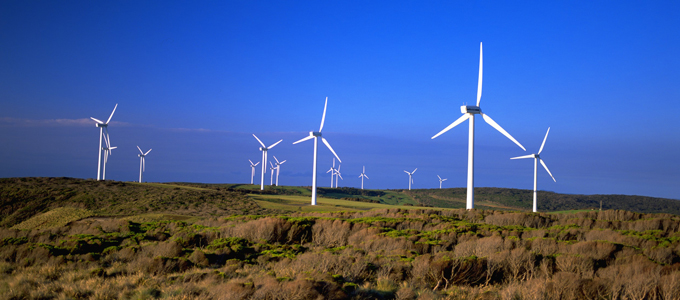
The improvements from applications of machine learning are fascinating for the technically inclined, and are already improving the performance of wind farms worldwide. However, we don’t consider them transformational when compared with the major changes the application of AI will have in other industries such as transportation (e.g. self-driving cars).
Big data, machine learning and artificial intelligence offer current and future benefits for wind farm developers, manufacturers, owners and electricity market operators and traders, and it’s worth considering the applications, while understanding the limitations.
If you would like to find out more about how Entura can help you use data and machine learning to optimise your wind farm, contact Patrick Pease or Silke Schwartz on +61 407 886 872.
About the author
Daniel Bennett is a renewable engineer at Entura. He has near a decade of experience investigating feasibility and due diligence energy yield assessments for renewable projects in Australia and around the world. With a background in mechanical engineering and computer science, and an interest in poking around in data to see what falls out, he assists clients seeking to understand the value in their projects.
MORE THOUGHT LEADERSHIP ARTICLES
The foundations of successful large-scale solar farms
On any large-scale renewable energy project, every opportunity to reduce costs counts.

Utility-scale solar farm projects require significant investment. So to keep total project costs under control and ensure success, it is vital that every step in design, construction and operation explores the most economical ways to create an efficient and safe project for the long term.
Although the civil engineering components of site development for a large-scale solar project may be smaller than the structural or electrical packages, civil costs during construction could add up to 8-10% of the total project cost – and that’s nothing to sneeze at.
Upfront consideration of costs and risks – both short-term and long-term – in the civil design of the plant can make a sizeable difference to the project’s total cost of construction, cost of long-term maintenance, and long-term financial returns.
Achieving the best and most economical civil works design means thinking carefully about the specific conditions of the site and the expected operating conditions of the project over 25 to 30 years, taking into account the potential for these conditions to change over time.
Getting the foundations right
Utility-scale solar farms need ground mounting systems and layout that suit the specific topography and geology of the site. Identifying the optimum solution in these areas is a key part of achieving a cost-effective design.
The mounting system functions as a foundation structure, and can also set the orientation and elevation of the PV arrays to maximise energy performance. Orientation, tilt and elevation need to be addressed in the civil design, for example to work out the PV panels’ ground clearance or likelihood of collision. As PV panels are lightweight structures, design of a stable foundation must also attend to vertical uplift and lateral resistance, in accordance with the relevant standards.
The various brands of tracking systems all compete to provide cost-effective solutions, particularly to address the challenges of undulating sites – so research the range of options to find the best fit for your project.

The challenges of undulating sites.
A lack of proper geotechnical ground investigation can lead to selection of inadequate foundation types, resulting in costly variations and delays. On-site pull tests will help support and augment the recommendations of the geotechnical study to optimise selection of a cost-effective foundation solution.
Installations that follow the topography are likely to allow a reduction in earthworks (cut/fill) and allow easier and more consistent choice of pier height and length per row. Shorter rows can follow the terrain better than long rows, but this is not the only criteria for selection. You should also consider aspects such as cost of cable management, extra motors and installation time.
The height/length, material and foundation options for piers become very significant when dealing with thousands of piers per solar farm. This means that you need adequate representation and quality assurance for design outputs.
Each individual pier height should be determined from detailed topographic surveys and computer modelling, taking into account the different minimum heights required to avoid ground collision, and the maximum heights that will be most economical for long-term operational and maintenance.
Another consideration in the search for cost savings is balancing the distribution of piers against the cost of earthworks, which will vary depending on the depth of cut and fill required.
There are a number of different foundation options, such as driven steel piers, screw piers, and precast concrete footings. But determining the appropriate choice must be based on a comprehensive understanding of the geology and geotechnical model of the entire site – which may vary across the large area of land occupied by the solar farm.
Rocky sites may result in driven piers reaching premature refusal. Sandy sites will vary in cementation and looseness, influencing any attempt to have a constant pier ground embedment. And clayey sites are prone to shrink-swell changes depending on changes in the level of moisture due to flooding or drought.
Planning for a changing future
For prudent design, you need to consider how the site conditions could change over the whole life of the solar farm, as early pull tests won’t predict future conditions. For example, how could the site be affected by flooding or by erosion – both now and under future climate conditions?
Thorough stormwater assessments (hydrological and hydraulic) are required to develop a good understanding of the existing (before development) and proposed (after development) drainage patterns of the site. If the site development alters the pre-development conditions, sediment control measures will need to be put in place.
The stormwater modelling will help to quantify the extent of flooding and potential for erosion.
For flat sites, allow for inundation (with major impacts on construction and potential deterioration of the site, trenches and foundations); for undulating sites, expect flash flooding and potential erosion and transfer of sediment.
Floodwater heights might affect solar farm infrastructure such as tracker motors or combiner boxes, so these will need to be installed at safe heights to minimise major potential repair or replacement costs.
Stormwater assessments will also quantify erosion potential around foundations, so that you can put suitable control measures in place, such as allowing for internal and external discharge points and armouring erosion-prone areas with riprap or erosion protection geotextiles.
Beyond the solar array
A number of other factors need to be considered in the civil works package, all of which have potential for efficiencies to reduce cost and avoid delays.
Roading alignments (horizontal and vertical) must consider the different needs of the construction phase and the longer-term operational period. Design of earthworks and road surface should take account of potential impacts on drainage patterns and potential erosion at low points.
Cable trenching should address interfaces and collisions with other infrastructure, and the need for backfill to meet requirements for thermal resistivity and strength.
Fencing is required for adequate site security specifically during operational life, but must be considered along with the need for access at various stages of the project. Fencing insulation and earthing needs must also be assessed in the design.
Civil design will also address the requirements of hardstand and laydown areas, particularly for the demanding construction phase.
Designing the risks out of your project
Based on our experience, we recommend that the civil design of a utility-scale solar farm should go through three phases: concept design, optimisation, and detailed design. If you rush from the concept design phase into detailed design, you’re opening your project to risks.
Significant optimisation will then be needed during the detailed design phase, which could potentially alter the concept design. That means rework, costing you time and money.
To achieve a civil design that avoids project risk and sets the right conditions for cost-effective delivery, be sure that you have timely, accurate and comprehensive topographic and geotechnical data about the site, that you carefully consider your earthworks material and handling, and that your systems and equipment interface all infrastructure effectively.
Keeping construction budgets under control and schedules on track depends on all the careful, detailed work done across all the aspects of the project at the design stages. Get your civil works right, and you’re tilting your solar farm towards success, whatever the weather.
To find out more about how you can ensure a cost-effective civil design for your solar project, contact Al Ahmed-Zeki on +613 6245 4122, Patrick Pease or Silke Schwartz on +61 407 886 872.
About the author
Al Ahmed-Zeki is a Specialist Civil Engineer with more than 30 years of civil engineering experience on renewable energy assets, including dams, solar farms and wind farms. He had led the civil design for a number of major solar projects from pre-bidding assessments through to due diligence and detailed design. Risk management is one of his prime interests. Al has published a number of technical papers and presented in the fields of geotechnics and dams engineering.
MORE THOUGHT LEADERSHIP ARTICLES
‘Nexus thinking’ for a secure and sustainable future
As the global population continues to grow, how can utilities and water managers balance the increasing and interrelated pressures on water, energy and food?
The complex triangular relationship among these three pillars of life is known as the ‘water-energy-food nexus’. It’s an intricate puzzle, in which the increased demand for each limited resource can significantly affect the security of all three.

According to the International Renewable Energy Agency, over the next few decades, global growth in population, economic development and urbanisation are expected to raise demands for water and food by 50% and to double the demand for energy. Water, energy and food are all fundamental to growing economies, alleviating poverty, and improving health and educational opportunities worldwide. To create a sustainable future, we must seek holistic and integrated solutions for water, energy and food challenges , as well as the appropriate balances amongst them.
With water being so central to food security and energy security, the potential impacts of climate change on water resources are of increasing concern. Climate change is likely to raise average temperatures in many locations, change the patterns of rainfall and inflows, and affect the frequency and severity of extreme weather events such as drought or floods – all of which increase vulnerabilities for water, food and energy resources already under strain.
A nexus approach
Our experiences throughout Australia and the Asia-Pacific region demonstrate that there is no single solution to the challenges of this nexus. It is really about a way of thinking and approaching decisions rather than a fixed solution or response.
These five broad considerations are likely to contribute to improved nexus outcomes.
Promoting and adopting ‘nexus thinking’
‘Nexus thinking’ means considering and understanding water, food and energy and their interrelationships, rather than viewing any in isolation. It is a strategic and holistic style of thinking that considers long-term implications across the nexus, weighing up and balancing social, economic and environmental goals.
Nexus thinking looks at the big picture: considering the whole catchment or river basin, trans-boundary issues, multiple uses (existing and future) and cumulative effects. It also involves thinking across agencies and organisations where responsibilities for water, food and energy lie.
Gathering the best information to understand nexus challenges
Responses to nexus challenges are more likely to be effective and sustainable if they are based on an informed and risk-based understanding of present conditions and possible future scenarios (taking into account interrelationships across sectors and regions).

This means that decision-makers need to understand the resource availability, current demand, known impacts, development opportunities and potential climate change implications in a given situation. They also need to understand what stakeholders and communities need, and explore opportunities for additional benefits to be realised.
Fostering collaboration among government, regulators, industry and communities
All stakeholders can benefit from collaborative and cooperative responses to the nexus and to stewardship of resources. The potential wins include better economic outcomes, improved reputation, reduced risks, avoided conflict, and opportunities for greater synergies. Reaping the benefits will require partnerships and cooperation among food-producing industries, the energy sector and other water-dependent industries, as well as local communities.
It’s also essential that governments, regulators and communities are closely involved in all decisions and developments affecting water, energy and food resources so that different priorities and opportunities can be considered. At a policy and regulatory level, cohesive and stable governance, policy and strategies are needed to facilitate and encourage the right collaboration that brings benefits to all stakeholders.
Assessing risks and building climate resilience
The water-energy-food nexus brings risks as well as opportunities . Interrelationships between water, energy and food, and the threats posed by climate change, should be built into risk assessments in each sector. State-of-the-art data collection, modelling and forecasting can assist businesses, governments and communities to better understand and mitigate their specific climate-related vulnerabilities and take action towards building greater resilience to future climate change impacts.
Innovating
In the water, energy and food sectors, technological and other innovations continue to expand the opportunities for improving productivity and resource efficiency for long-term sustainability of pressured resources.
Nexus challenges may also bring opportunities
The nexus is not only a dynamic of ongoing resource competition. Integrated planning offers opportunities for potential synergies and benefits among sectors.
For example, in the hydropower sector, electricity generation is intrinsically linked with water availability. The need for water for irrigation to produce food and to drive agricultural productivity may compete with water requirements for hydropower generation. Hydropower’s water needs may also compete with the requirements of urban water supply, other industries and environmental and social needs.
However, renewable energy resources such as hydropower can also offer benefits to the water and food sectors through improving water resource management, providing multipurpose storages, contributing to the development of water supply infrastructure and, of course, generating the electricity critical to food-producing industries.
Many existing hydropower storages, both in Australia and internationally, were developed solely to supply water for energy generation. However, over time and with increasing competition for water and food, the storages have become multipurpose, often providing water for domestic supply, irrigation, and commercial and recreational fisheries.
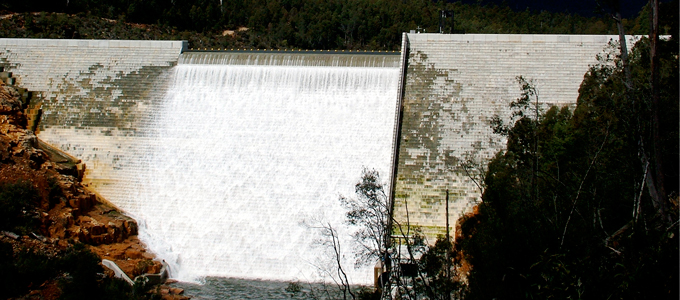
In South-East Asia, some hydropower storages are now more important as a source of irrigation water for downstream communities than for the energy they generate. By providing water to the downstream communities, irrigation and food production has increased significantly since development of the schemes, lifting the economic development of the region and providing benefits across the community.
Integrating other renewable energies into water supply, irrigation and food production can also provide mutual benefits, such as utilising renewable energy for pumping on farms or for water desalination. Incorporating small hydropower into existing water infrastructure can improve efficiencies and create new low-carbon income streams to support effective water supply delivery. Another innovation of attaching solar PV to covers on water storages provides electricity for pumping while minimising evaporation and maximising water availability.
Whether at small-scale single utility or local geographic area or at a national or multinational scale, nexus thinking can bring about mutual benefits for energy, water and food outcomes .
If you would like to find out more about how Entura can help you develop a sustainable water or energy solution or respond to the challenges of the water-energy-food nexus, contact Dr Eleni Taylor-Wood on +61 3 6245 4582 or David Fuller on +61 438 559 763
About the authors
Dr Eleni Taylor-Wood is Entura’s Principal Consultant, Environmental and Social Science. Eleni has more than 20 years’ experience successfully managing large-scale, complex projects that run over several years, as well as providing expert advice and independent review for a range of infrastructure and planning projects. She has worked on projects around the world including in Australia, Mozambique, South Africa, Iceland, Colombia, India, Malaysia, Mekong, Solomon Islands, Fiji and Papua New Guinea. Her experience covers a vast gamut of studies including: environmental and social impact assessment and management; strategic management of wetlands and waterway; feasibility and approvals for new hydropower projects, environmental flow determination and assessment, and sustainability assessments. Eleni is currently one of eleven Accredited Assessors under the Hydropower Sustainability Assessment Protocol worldwide.
David Fuller is Entura’s Principal Consultant, Water Management and Technology. David has more than 30 years’ experience working on water management projects across Australia and overseas. He has successfully delivered projects for local, regional, state and national government agencies; and for private sector clients in the irrigation, coal seam gas, mining and energy generation sectors. David specialises in engineering and environmental hydrology, and water management. He also has expertise in data management systems, statistics, hydraulics, water quality, ecological risk assessment and natural resource economics.
MORE THOUGHT LEADERSHIP ARTICLES
Building climate resilience into operations: Hydro Tasmania’s journey
Climate change presents major risks for power and water businesses. To best prepare for the impacts of extreme or changing weather conditions, asset managers need to act now to build climate resilience into operations and ongoing risk management.
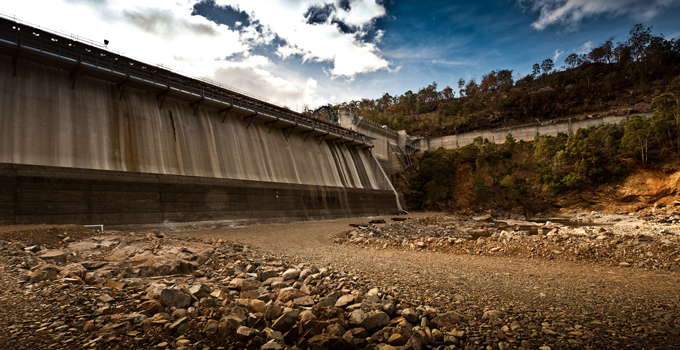
Around the world, businesses and communities face the many risks of climate change such as higher temperatures, changes in water availability and rainfall, more frequent and severe weather events. For power and water businesses, these may lead to major infrastructure damage and financial and environmental consequences.
In 2015 to 2016, these hypothetical risks became a challenging reality for Hydro Tasmania, Australia’s largest renewable energy producer and water manager. Hydro Tasmania faced unprecedented extreme weather conditions from September 2015 to June 2016 – and managed to come through the crisis while still safeguarding Tasmania’s ongoing access to high-quality, reliable water and power, and limiting environmental consequences and asset damage.
Entura supported Hydro Tasmania’s response to this major climate-related challenge through a range of earlier best-practice resilience-building measures, and significant interventions across a range of areas during the crisis itself.
What happened in 2015-2016?
Although Hydro Tasmania had experienced some variability in the past in Tasmania’s climate patterns, and despite understanding the risk of increasing future climate variability, the extreme dry conditions of September 2015 to April 2016 were unseasonal, unexpected and unprecedented. In Tasmania, summer inflows are traditionally low, but in this case, the usually dry summer was preceded by record-low spring inflows. Below-average rainfall across both spring and summer was the lowest recorded in 50 years.
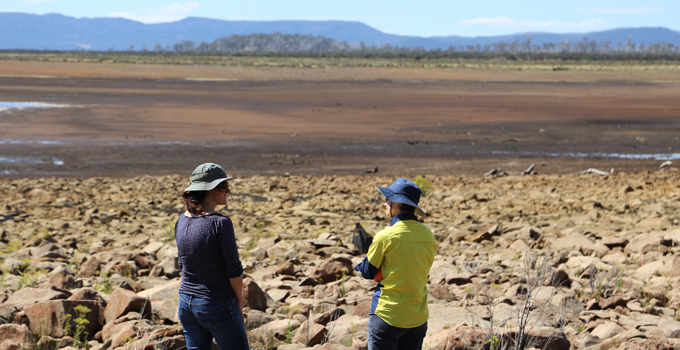
In normal operating conditions, low inflows could have been mitigated by importing power from mainland Australia across the undersea interconnector cable, Basslink, so that storages could be maintained. Yet, in another unprecedented scenario, in December 2015 the Basslink interconnector became inoperable just as summer arrived. Hydro Tasmania was now no longer connected to Australia’s national electricity market and many months remained before expected autumn/winter rains.
By late April 2016, Hydro Tasmania was experiencing its lowest storage levels ever, down to 12.5% total energy in storage, and serious environmental risks were emerging in some of its sites.
To compound the challenges, in January and February 2016 at least 70 separate fires were listed in Tasmania’s north-west, west, south-west and central highlands.
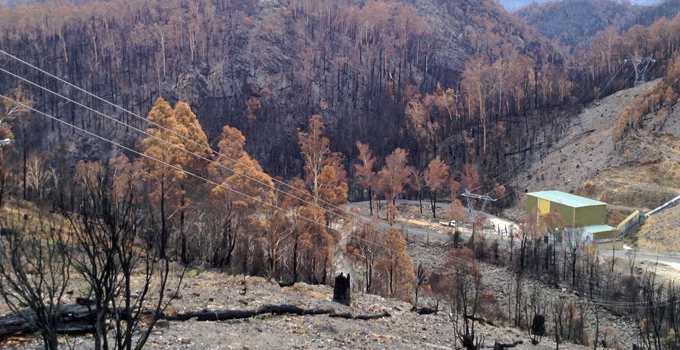
These extraordinary circumstances combined to present Hydro Tasmania with a major operational challenge. How could it keep the lights on and keep businesses operating in Tasmania while also protecting the environmental values associated with water storages and preserving the condition of its assets?
When the drought broke, conditions shifted from one extreme to another. Floods in June 2016 in northern Tasmania hit historic highs, exceeding all previous flood records in many locations. Several river-level measurement stations experienced the highest water levels on record.
How was the crisis managed?
Hydro Tasmania’s climate resilience and risk management strategies were called into action. Entura actively supported Hydro Tasmania through the energy supply challenge across a range of measures.
Generation planning and supply
To maintain adequate power supply, Hydro Tasmania drew on generation modelling and planning based on rainfall forecasts, climate model outlooks, and known and predicted electricity demand.
Voluntary reductions in major industrial loads were negotiated, and actions were taken to assess and instigate alternative generation options, such as restoring gas generation and implementing 200 MW of temporary diesel generation to bolster power generation. Entura assisted Hydro Tasmania to identify and assess feasible generation options and sites, and to progress these options through approvals and into operation.
Through these integrated and rapidly executed measures, Hydro Tasmania was able to maintain electricity supply for Tasmania without any outages for domestic users.
Environmental management and multiple water use
Another critical aspect of the successful result drew on Entura’s expertise in environmental management. Environmental impacts were monitored throughout the crisis. Lake-level risk bands were reassessed to better protect water quality and threatened species and to limit the long-term impacts on environmental values.
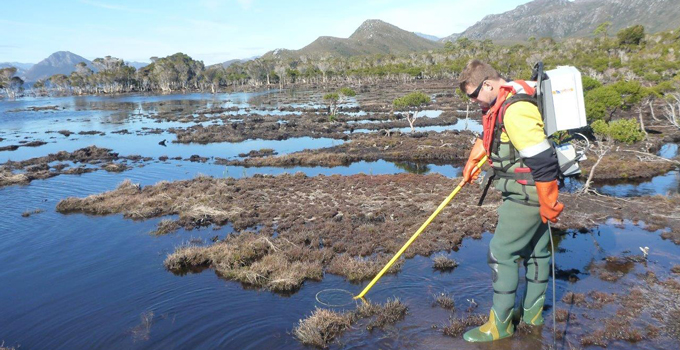
Water management also considered and mitigated impacts on other water users, such as boating, recreational fishing and water supply.
Bushfire management
The bushfires experienced across the state during the summer period did not adversely affect Tasmania’s energy security, as Bushfire Preparedness Fire Management Plans were already in place, and were activated to protect individual power stations and key assets through fuel reduction and other measures.
Dam safety and monitoring
Despite the extreme flood conditions, dams and spillways operated well within their design parameters, indicating that Hydro Tasmania’s ongoing dam monitoring and dam safety systems were robust. Safety inspections after the floods found only minor damage to non-critical elements of some dams.
During the high rainfall conditions, monitoring of dams and waterways provided alerts to downstream communities.
Road and asset management
Another consequence of the flooding was damage to some of Hydro Tasmania’s secondary assets (roads, canals) due to landslips, and the loss of some river-flow monitoring sites. Entura assisted with assessment and rectification of this damage.
Success drew on prior climate-resilience preparation
Ultimately, the example of Hydro Tasmania demonstrates climate resilience in practice. It shows how an investment in climate resilience enables a power and water business to be better prepared, more flexible and more robust in the face of a climate ‘shock’.
Hydro Tasmania’s management of the crisis required a comprehensive understanding of Tasmania’s climate and catchments. Entura’s involvement in 2007 in developing a Climate Change Response Strategy had provided a basis for this understanding, and a crucial input into identifying the risks and opportunities stemming from climate change.

Further inputs for climate resilience came through the collaboration in 2008 to 2010 between Entura and the CSIRO (Australia’s national scientific research organisation) on the first fine-scale climate and river system modelling for Tasmania, through the Climate Futures for Tasmania and the Tasmania Sustainable Yields projects.
The results of that research were state-of-the-art regional climate modelling and hydrological models to project future catchment yields for Tasmania. The modelling indicated that under climate change Tasmania could expect gradual temperature rises, changes in rainfall patterns over coastal regions, reduced rainfall over central Tasmania, changes to run-off patterns, and changes to the frequency and severity of extreme weather events including increased rainfall intensity and floods.
This modelling was critical in enabling Hydro Tasmania to plan and balance generation and storage levels over a range of demand and inflow scenarios and to assess environmental impacts during the extended period of drought.
Another key aspect of managing the energy supply challenges through the drought involved setting up supplementary diesel generation. This drew on Entura’s expertise and extensive involvement in developing hybrid off-grid renewable energy systems.
Hydro Tasmania’s climate resilience also involved being prepared for the drought to break. Key contributions from Entura included flood forecasting and flood support systems, ongoing support of Hydro Tasmania’s dam safety and emergency planning programs, and prior involvement in upgrading dams and designing spillways to withstand predicted increases in the frequency and magnitude of floods.
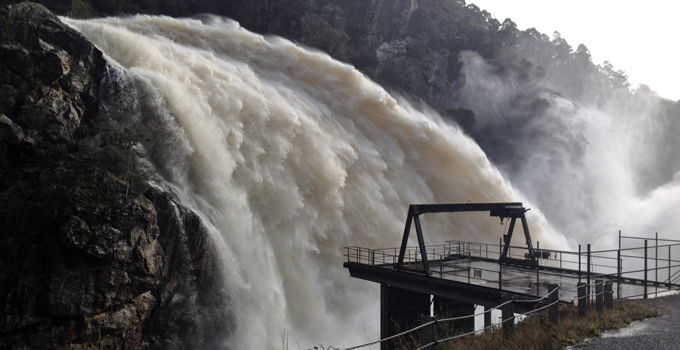
Entura also supported Hydro Tasmania’s procedures and ongoing activities to manage the secondary impacts of the fires and floods (such as damage to infrastructure), as well as the risks posed by low lake levels to social and environmental values. Entura’s environmental scientists monitored threats to aquatic flora and fauna through the 2015/16 crisis. To ensure the least likelihood of long-term or irreversible environmental damage, Hydro Tasmania’s environmental risk bands were revised.
Investing in your climate resilience
Any proactive and sustainable power or water business needs to invest in understanding the range, likelihood and consequences of the potential impacts of climate change for their current and planned systems and operations – whether for hydropower, transmission, dams, irrigation or water supply – and how to avoid or mitigate the impacts.
The more businesses understand the potential impacts of climate change and risks to their projects and operations, the better they can prepare, adapt, and build resilience to climate change impacts.
If you would like to learn more about building greater climate resilience into your project or operations, please contact Dr Eleni Taylor-Wood on +61 3 6245 4582, Phillip Ellerton on +61 439 010 172 or Shekhar Prince on +61 412 402 110.
About the authors
Tammy Chu is the Managing Director of Entura, one of the world’s most experienced specialist power and water consulting firms. She is responsible for Entura’s business strategy, performance and services to clients, and is part of Hydro Tasmania’s Leadership Group. As a civil engineer, Tammy specialised in the design and construction of mini-hydro and hydropower systems, project management, hydropower investigations, prefeasibility and feasibility studies, environmental assessments and approvals, resource investigations and resource water management. Tammy is a member of the Board of the International Hydropower Association. She was the first female and now past president of the Tasmanian Division of Engineers Australia, and was an Engineers Australia National Congress representative.
Dr Eleni Taylor-Wood is Entura’s Principal Consultant, Environmental and Social Science. Eleni has more than 20 years’ experience successfully managing large-scale, complex projects that run over several years, as well as providing expert advice and independent review for a range of infrastructure and planning projects. She has worked on projects around the world including in Australia, Mozambique, South Africa, Iceland, Colombia, India, Malaysia, Mekong, Solomon Islands, Fiji and Papua New Guinea. Her experience covers a vast gamut of studies including: environmental and social impact assessment and management; strategic management of wetlands and waterway; feasibility and approvals for new hydropower projects, environmental flow determination and assessment, and sustainability assessments. Eleni is currently one of eleven Accredited Assessors under the Hydropower Sustainability Assessment Protocol worldwide.
MORE THOUGHT LEADERSHIP ARTICLES
Are you investing in your most valuable asset?
There is banter doing the rounds on social media: One person asks, ‘What if we develop our people and they leave?’ The retort that quickly follows is, ‘What if we don’t develop our people and they stay?’
If we ask senior managers at power and water utilities about the critical factors in managing their assets, they might refer to balancing business risk with financial constraints while maintaining mandatory statutory compliance. They might list things such as asset management strategy, plant capability, plant reliability, plant performance, spares inventory, adequate OPEX budget, real-time data and effective software platforms.
Prompted further, leading utilities are making the link between delivering key functions and developing their people. Utilities are starting to see the need to invest in the development of their people as well as their systems and processes to help ensure implementation of sound business strategy. They may go as far as including people resources on their asset management breakdown structure.
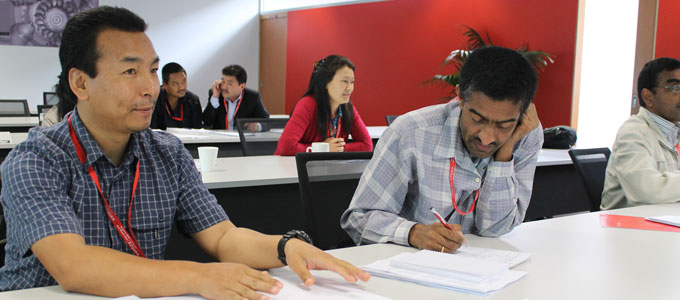
Power and water utilities the world over, whether public or private, are entrusted with managing important infrastructure providing a range of essential services to their customers. The effective operation of these utilities is a concern for governments, shareholders and communities alike, and utilities are increasingly focusing on being customer-centric, commercially focused, and operationally efficient.
Many openly specify a vision or mission that requires the business to embark on a ‘change journey’, using words such as responsiveness, innovation, reliability, modernisation, optimisation, safety, communication, sustainability, operational excellence, commercialisation and continuous improvement.
There is a commonality in many of these words, and that is people. It takes people to be responsive and commercially focused, to behave safely and to communicate. It also takes people to understand current performance and identify innovations.
Effective and efficient delivery and operation rely on people having the right skills and the competency to bring about change. The change may include new technologies and systems that people will need to learn to apply. So, cultural change is at the heart of any such journey, taking into consideration the desired future state, the behaviours (as well as the skills required to get there), and effective engagement and empowerment of employees along the way.
Over the years, I have worked with various power and water utilities, as well as developers and financiers, to lift capability across technical and managerial levels. I notice that, while people and their capability is on the minds of senior managers, there can be a disconnect with strategic direction, with no real integration with operational performance or workforce planning, and often a skewed view on what lift in capability is really required.
Change is coming
Around the world, a more integrated approach to utility operations is emerging. Globally, organisations are working toward change through integrated ‘asset management’ approaches that combine consideration of physical, people and process assets.
For many utilities, the natural assets are also important as an input that must be managed sustainably (e.g. water resource) or managed to meet regulatory and customer expectations.
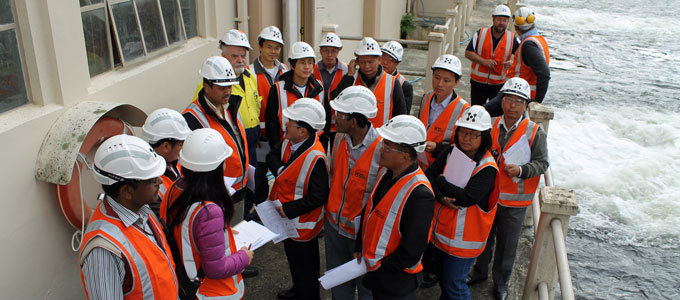
Other frameworks help organisations to link human, financial, social and manufactured capital when implementing strategy. Whatever the framework, the integration of all ‘assets’ or ‘capital’ is important in achieving the somewhat elusive ‘operational excellence’.
We know that fundamental to the success of a transformation journey is a sustainable workforce aligned to achieving the vision, mission and strategy of the business through the development of appropriate knowledge, skills and behaviours that focus on the business’s longer term goals. Thus, a whole-of-business approach to learning and development can play a critical role in successful implementation of strategy. Integration is needed across the various typical functional areas: strategy, finance, operations, human resource management and so on.
Success requires integration and alignment
Clients often ask the Entura clean energy and water institute to assist them with particular training in one of our key technical topics. Through further conversation, I often find there are other aspects in the holistic picture that need to be painted first. Are the procedures in place around which to train? Will this capability be important in the future? Will the learning and development activity address key risks? Who else in the business needs to understand these issues? Does it align with the strategic direction?
Integrating learning and development into business planning and operations is one way to ensure that capability development programs are designed in the context of strategy and initiatives, workforce planning, operational plans, HR systems, functional structures and mechanisms, and risk management activities.
Through facilitated workshops, senior management teams can set the broad direction for learning and development. This direction can then feed into more detailed capability assessments and training needs analyses. Through such an approach, investment in training is effectively apportioned in the right direction with the greatest chance of ultimately improving organisational success.
Taking the time and effort to prioritise capability development and ensuring it is aligned with strategic direction will bring ultimate rewards for utilities and bring a real return on investment. Not only will investment in capability development be better directed, it will assist with the wider challenge of engaging employees in the change journey itself.
If people grow fatigued with change, learning can rejuvenate and inspire. As Leonardo da Vinci once said, ‘Learning is the only thing the mind never exhausts, never fears and never regrets’.
If you would like to discuss how to integrate learning and development objectives with business strategy or to design a training program to suit your organisation, contact Dr Amanda Ashworth on +61 417 503 692.
About the author
Dr Amanda Ashworth is the Business Manager for the Entura clean energy and water institute. She is responsible for strategic development and operations including partnerships, client engagement, course development and oversight. Amanda also provides strategic advice on learning and development frameworks and contributes to leadership and management training for clients. Combined with her passion and commitment for capability development and training, Amanda’s research background and more than 20 years’ experience in environment, clean energy and water consulting and strategic planning, enables her to support clients to understand their capability and identify the right program of activity to meet their needs and bring organisational success.
MORE THOUGHT LEADERSHIP ARTICLES
Managing risks for successful, sustainable projects
All power and water projects involve risks. The key to project success and sustainability is being able to anticipate, monitor and manage the full range of risks throughout the project lifecycle.
For power and water asset developers, sustainability is increasingly recognised as a key marker of project success and corporate reputation. Whether you’re building a hydropower station, a dam, a wind farm or a solar farm, achieving sustainability means ensuring that projects appropriately balance technical, environmental, social and economic considerations to deliver benefits and minimise risks across all these areas.
Power projects, especially in developing countries, hold great potential to contribute to the greater good by increasing prosperity and alleviating poverty, but growth must be balanced against any current and future impacts on communities or the environment. Sustainability is therefore a key concern for responsible developers, and for international financing organisations such as the Asian Development Bank, the International Finance Corporation and the World Bank.
Managing risks carefully, ethically and transparently can improve the financial and technical viability of the project, the ability to secure finance, the ability of key stakeholders to make informed decisions about the project’s future, the likelihood of community acceptance or ‘social licence to operate’, and the overall project outcomes, both now and for long-term success and sustainability.
What are the risks?
Some of the key risks to be considered throughout the design, development and operation of a power or water asset include factors such as the need or market for the project, the future energy or water demand, the best technology or design for the project, and the current and future availability of the resource.
It is also critical to consider the project’s stakeholders and broader community, particularly whether the project could involve potential social or environmental impacts and how these could be avoided, mitigated, offset or compensated, not just during development of the project but also during operation. Safety is also a key issue to be managed throughout a project’s life, including that of employees as well as the broader community.
Although not all risks will necessarily be able to be fully predicted, businesses are likely to gain substantial benefits from making structured and systematic efforts to foresee risks across the spectrum of financial, technical, stakeholder, community and environmental issues.
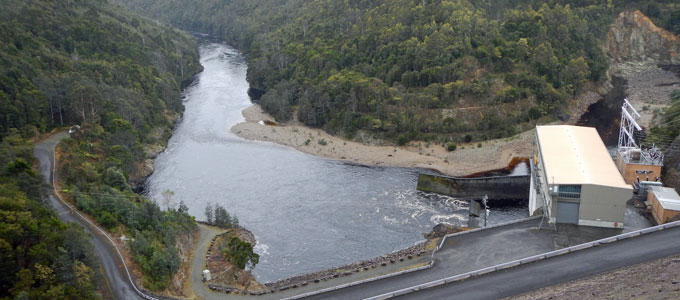
Assess risks early and often
Many project risks can be minimised or mitigated if they are properly anticipated early in the project, and progressively monitored and evaluated throughout the design, development, construction and operational phases.
Identifying key risks early allows companies to manage these risks throughout the project, minimising corporate, technical, environmental and social impacts and their associated costs, including damage to corporate reputation should an unmanaged risk develop into a crisis.
Assessing the risks progressively or in stages can minimise not only the cost of formal evaluation, but also save significant time and costs that could be wasted if a project were to be judged unviable during development.
Sustainability assessment, both formal and informal
Being able to formally or informally assess and comprehensively document risks and actions towards project sustainability offers significant advantages. While it can help guide a comprehensive review of risks, it can also help to identify further opportunities to increase positive outcomes. As well, it provides an easy way to regularly assess progress towards sustainability goals against established baselines, and offers a format for clear reporting both internally and to external funding bodies and stakeholders. In other words, sustainability assessment and reporting is a valuable step in demonstrating a genuine commitment and responsible approach to achieving greater sustainability.
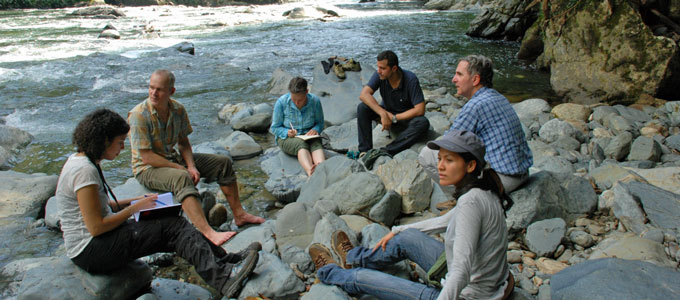
Entura uses a unique, tailored self-assessment tool to help power and water companies and developers understand the risks and opportunities facing their projects and build their capacity to assess, monitor and report on those projects. This tool is based on the assessment criteria identified in internationally recognised guidelines and standards such as the Hydropower Sustainability Assessment Protocol and those used by the International Finance Corporation.
The sustainability scanning tool can be used by an organisation to self-assess a project to identify whether key issues, risks and opportunities have been fully considered and to identify potential gaps needing further attention. This can be done internally following training on how to assess the criteria or undertaken by Entura’s trained assessors.
In addition, Entura’s sustainability scanning tool can be adapted to include other standards relevant to a project or client, or to assess compliance with criteria relevant to a client’s requirements or obligations (such as internal policies and/or permit or concession conditions). It can be used at any stage, or multiple stages, of a project, and for any level of sustainability goal (i.e. good practice or best practice). It can also be repeated over time for the same project to assess ongoing improvement, or to compare projects across a client’s portfolio.
The potential benefits to power and water asset developers of a systematic and thorough identification and management of the full range of project risks include easier access to finance, reduced corporate risks and costs, greater ability to anticipate and respond to stakeholder concerns, and avoidance of delays and problems through the project’s life.
This holds promise for delivering power and water infrastructure projects that are more likely to contribute positively to social, environmental and economic goals both now and into the future.
If you would like to discuss how Entura can assist you with assessing the sustainability of your project or support you to assess and track your own progress towards minimising risks and increasing sustainability, please contact Dr Eleni Taylor-Wood on +61 3 6245 4582 or Shekhar Prince on +61 412 402 110.
About the author
Dr Eleni Taylor-Wood is Entura’s Principal Consultant, Environmental and Social Science. Eleni has 20 years’ experience successfully managing large-scale, complex projects, as well as providing expert advice and independent review for a range of infrastructure and planning projects. She has worked on projects around the world including in Australia, Mozambique, South Africa, Iceland, Colombia, India, Malaysia, China, Solomon Islands, Fiji and Papua New Guinea. Her experience includes environmental and social impact assessment and management, strategic management of wetlands and waterways, feasibility and approvals for new hydropower projects, environmental flow determination and assessment, and sustainability assessments. Eleni is currently one of eleven accredited assessors worldwide under the Hydropower Sustainability Assessment Protocol.
MORE THOUGHT LEADERSHIP ARTICLES
Using risk assessment to guide dam safety upgrades
Whether your focus is on a single dam or a whole portfolio, a risk assessment process helps you decide how best to intervene, and when, to get the maximum improvement in safety from your investment.

Using a risk assessment process to assess a whole portfolio of dams helps asset owners prioritise their limited resources for safety upgrades. Richard Herweynen, Entura’s Principal Civil Engineering, introduced our portfolio risk assessment program in his article ‘Dam safety: protecting lives and driving efficiencies’. Now we explore how a similar process can be used for a single dam to guide investigations, prioritise the order of a staged upgrade, and manage safety risks during construction, using the example of Hydro Tasmania’s Rowallan Dam.
The challenges of an ageing dam
Rowallan Dam is a 43m-high earth and rockfill dam built in the late 1960s, with two embankments on either side of a spillway located on a knob of very hard quartzite. The reservoir plays a key role in Hydro Tasmania’s hydropower system: it is a large storage at the top of the catchment and operates over a large range of water levels, capturing the high winter flows and then releasing them over the summer months through a cascade of five power stations downstream.
A dam portfolio risk assessment (PRA) completed by Entura in 2006 had identified Rowallan Dam as one of the potentially higher risk dams in Hydro Tasmania’s portfolio, with a number of suspected but not confirmed deficiencies. The potential deficiencies included a relatively high probability of a piping failure (internal erosion of the earthfill) as the filters were suspected to not meet modern standards and the dam had suffered a piping incident adjacent to the spillway walls when it was first filled.
As well, the PRA identified other potential deficiencies including questions regarding the spillway capacity, liquefiable foundations, potential for landslide hazards at the reservoir rim, structurally deficient spillway walls, and a limited capacity for dewatering.
With multiple potential deficiencies such as these, a range of challenges arise: Which deficiencies do we tackle first? Do we need to address all the deficiencies? To what level do they need to be addressed? How quickly should we address the deficiencies? And how do we justify to the business a large capital expenditure that will not generate any additional returns?
Reducing uncertainty
The original scope of the PRA was to assess the dam portfolio based only on the existing available information with the exception of preliminary dam-break modelling and consequence assessment. To allow the PRA to be completed within a reasonable timeframe and budget, this inevitably meant that significant gaps in our knowledge of the dams were filled with assumptions and best estimates.
A very targeted investigation program was then required to fill the gaps in our knowledge of Rowallan Dam’s particular possible failure modes and to prepare a fully justifiable business case. Entura led the investigation and concept development phase, working closely with external parties. The necessary investigations included:
- geological mapping of the potential landslide features (to determine whether they were in fact glacial features and not of concern)
- investigation into the core, filters and rockfill of the embankment (to confirm their properties)
- more detailed dam-break modelling (to confirm whether the original estimates of consequences of failure were correct)
- drilling of the left embankment foundation (to demonstrate whether liquefaction was a significant concern)
- full modelling of the flood hydrology (to confirm the flood risk)
- structural analysis of the spillway walls supporting the embankment on either side of the spillway chute
The spillway wall failure mode had not been identified in the PRA and was included in the investigation program to demonstrate that it was not a concern; however, it turned out to be the failure mode with the highest probability, and became the highest priority of the upgrade program.

Developing the upgrade program
When the specific investigations for Rowallan Dam were complete, the risk assessment for the dam was revised. The revised risk assessment determined the potential failure modes (in order of probability) to be failure of the spillway walls; piping along the spillway walls; piping through the upper part of the embankments; piping through the lower part of the right embankment; and overtopping of the dam during an extremely rare flood (rarer than a 1 in 10 000 year flood).
Developing an integrated, effective and progressively implemented solution that would not increase the dam safety risks during construction was a major challenge. Many alternatives for the outlet works, spillway augmentation and spillway walls were developed by Entura for resolving each dam safety risk while considering the construction flood risks and overall project risks. This allowed Entura to find the right package of solutions to minimise the risks as well as the capital outlay. The ultimate solution included:
- increasing the monitoring of the spillway walls: To provide early warning of a possible failure, inclinometers were telemetered and alarmed. Monitoring picked up a possible deterioration in one wall, which was temporarily propped until a permanent solution could be implemented.
- increasing the dewatering capability of the dam: The riparian valve was replaced with one of greater diameter, and the controls of the turbine relief valve were modified to allow emergency bypass. This increased dewatering capacity was critical to managing flood risks during the later stages of construction and improved the ability to control any potential piping failure.
- strengthening the spillway walls on the inside of the existing walls: This approach incurred less risk of overtopping during construction than if the walls were strengthened on the embankment side. The replacement walls were designed to accommodate higher future discharges.
- installing modern, compliant embankment core filters: Installing these filters would protect the embankment from piping, but required major localised excavation adjacent to the spillway walls, including from the embankment crest to foundation, and reconstruction of the top seven metres of the embankment.
Lower risks, greater compliance
The major upgrades at Rowallan Dam have now reduced the dam’s safety risks. By considering a wide range of upgrade options and demonstrating that the selected option would significantly reduce the risk of failure through very targeted capital works, the Rowallan Dam risk assessment played a key role in developing a sound business case to demonstrate that the capital investment was both necessary and efficient – for a safer dam, both now and long into the future.
To find out more about how Entura can work with you to assess and remedy the safety risks of your dams or other water infrastructure assets, please contact Paul Southcott on +61 3 6245 4145, Phillip Ellerton on +61 439 010 172 or Shekhar Prince on +61 412 402 110.
About the author
Paul Southcott is a specialist civil engineer at Entura. He has more than 28 years of professional expertise in civil and dam engineering, as well as expertise in geotechnical, foundation, structural, hydraulic and hydropower engineering. Paul’s dam engineering experience spans geotechnical and hydrological investigation; feasibility and options studies; concept, preliminary and detailed design; engineering assessment, consequence assessment and risk assessment; safety reviews; monitoring and surveillance; and emergency planning. He has particular expertise in dam risk assessment and project managed the Hydro Tasmania portfolio risk assessment of 55 large dams, Southern Water’s 18 dams and most recently SA Water’s 18 large dams. He was the technical leader for the Rowallan Dam upgrade project overseeing all aspects of the project including the detailed design of the spillway wall upgrades.
MORE THOUGHT LEADERSHIP ARTICLES
Prioritising safety at Rouna 2 hydropower station, PNG
As the saying goes, ‘safety doesn’t happen by accident’.
The measures taken to address safety risks at the underground Rouna 2 hydropower station in Papua New Guinea offer a timely reminder of the basic requirements for adequately managing safety risks and protecting workers when upgrading older hydropower stations or when developing new ones.
The upgrade of Rouna 2 – including adequate exits, flood protection, fire and smoke detection and control, and emergency management – illustrates that much more than just the main generating equipment needs attention to adequately identify and address safety risks and hazards in a hydropower station.
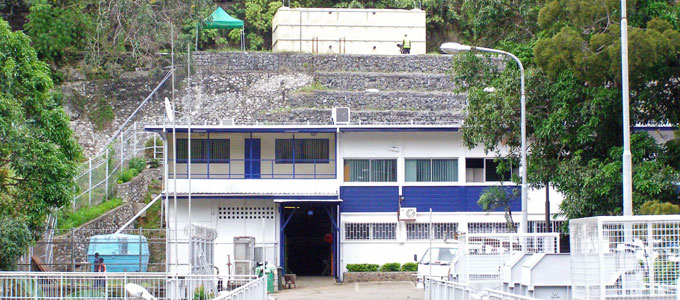
A run-down, risky hydropower station
Rouna 2 is one of four stations operating in a cascade down the Laloki River. It has five 6 MW vertical-axis hydro units from the late 1960s housed in an underground machine hall. Although only a small station, Rouna 2 has all the complexity and requirements of a much larger station.
By the time specialist power and water consulting firm Entura began working on the project to upgrade Rouna 2, the power station was old, run down by years of hard work, and was presenting its owners and workers with safety risks typical of many older hydropower stations.
The initial project concept was simply to refurbish the machines, but it quickly became clear that repairing or replacing only the generating units wasn’t going to be enough to sustain the power station’s operation, and that safety concerns needed to be urgently remedied.
Upgrading station evacuation
The Rouna 2 power station originally had only one access and exit route for the underground machine hall via open stairs in a 200 metre-deep vertical access shaft. No alternative emergency exit route was available. As the access shaft also contained all the power and control cables, it further intensified fire and safety risks.
To improve evacuation, a new emergency escape route was created via new ladders and platforms down the tailrace surge shaft to the tailrace tunnel, which normally carries water out of the power station.
Within the machine hall, the emergency escape route was made safer by being enclosed and made fire resistant, and kept smoke-free by a fan started automatically. Smoke hoods (emergency evacuation masks that reduce the risks of inhaling toxic smoke and gas) are provided to offer temporary protection for personnel needing to cover large distances to the start of the safe escape route.
To provide adequate lighting and signage for emergency escape, the DC-powered emergency lighting was upgraded. Evacuation alarms were improved, including strobe lights as well as audible sirens.
Improving flood protection
An underground power station surrounded by huge quantities of water under high pressure is particularly vulnerable to flooding. Rouna 2 had poor flood protection and dysfunctional evacuation alarm systems.
The evacuation alarms were upgraded and linked to flood detection within the machine hall. An automatic flood protection scheme was implemented to shut down the underground generating units and close the surface intake gate.
Improving fire and smoke detection and control
Hydropower stations are at risk of fire because they are full of electrical equipment. The Rouna 2 station had no fire detection system and minimal fire protection systems, so urgent attention to all fire measures was needed.
New fire panels and a new fire detection system were installed, as well as a new fire-fighting water supply, fire hydrants and hose reels. Sprinklers were installed in the access shaft and the machine hall. Older carbon-dioxide-based fire-protection systems for generator fires were replaced with water-spray systems. Fire doors were rehabilitated to close automatically.
Implementing an innovative new ventilation system
Ventilation systems in hydropower stations seldom provide any adequate smoke removal, despite the dangers of smoke inhalation. Technical innovations in the upgrade of Rouna 2’s safety systems included methods for smoke control integrated with the station’s ventilation system and its new fire panels and doors.
We upgraded the ventilation and smoke exhaust system by automatically reversing the ventilation fans during a fire, so that they exhaust smoke from the machine hall to the surface, and draw fresh air back down into the machine hall. At the same time, automatic fire doors close within the machine hall.
A safer power station for a safer future
Although new, large hydropower developments typically embrace complex and comprehensive safety standards and features, around the world many older stations are seriously deficient, presenting hazards that urgently need to be identified and resolved. Through our improvements to its ancillary services and safety systems, Rouna 2 is no longer in this extreme risk category.
However, adequate safety facilities are not the only requirement to maintain a safe hydropower station. Workers need the knowledge to maintain safety features, equipment and systems, and the skills to use them effectively. Entura has provided contract operators and station managers to work alongside local employees to help improve emergency and crisis management systems, provide local training and build capacity to ensure that Rouna 2’s future promotes a safer power station and safer workers.
To discuss how Entura can assist you with assessing hydropower station risks or developing a hydropower safety program or upgrade, please contact Ambrose Canning on +61 3 6245 4212 or Shekhar Prince on +61 412 402 110.
About the author
Ambrose Canning is Entura’s Principal Consultant, Mechanical Engineering. He has more than 30 years’ experience working on hydropower and water infrastructure projects in Australia, New Zealand, Malaysia, Papua New Guinea, India, Nepal, Philippines and Indonesia. He specialises in all aspects of hydropower development and redevelopment, upgrade and rehabilitation. He also has expertise in aspects of water infrastructure, such as dam electro-mechanical and hydro-mechanical equipment, pipelines, valves, pumps, screens, gates, valves and bulkheads.


